Last updated 22 December 2021
DOUGLAS DC-5 IN AUSTRALIA
Compiled by Geoff Goodall
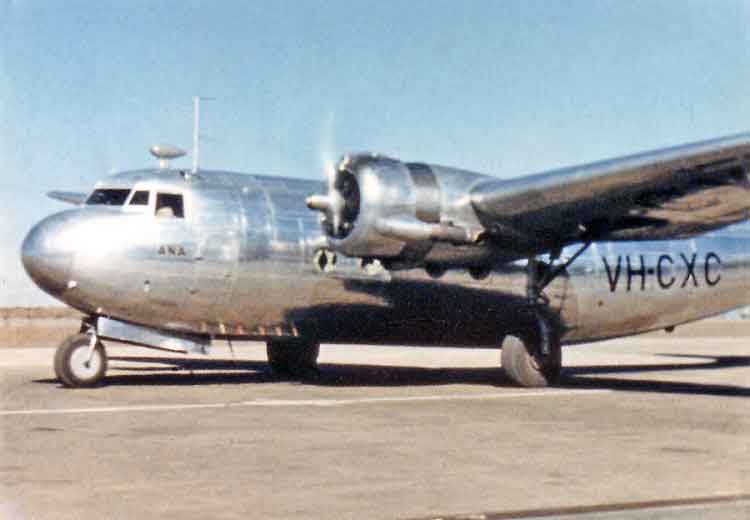
ANA passenger service. This is a frame taken from an amateur movie clip. Courtesy Greg King via Fred Niven
A total of twelve DC-5s were built before the production line was closed to give priority to large military orders for Douglas aircraft as America went on to a war footing prior to Pearl Harbor. They were built at at Douglas Aircraft Co's plant at El Segundo, California.
Three DC-5s served in Australia and their histories are detailed below. All were KLM aircraft operated by the subsidiary KNILM in the Netherlands East Indies (now Indonesia) which escaped the Japanese advance by flying to Australia. The fourth KNILM DC-5 received minor damage at Batavia (now Jakarta) and was unable to join the evacuation flights - it was captured intact by Japanese forces and flown to Japan for evaluation by Tachikawa then flown as a radio navigation trainer.
Designed as a 16 to 22 passenger commercial airliner, its promising early sales potential was frustrated by the outbreak of WWII in Europe. The original British Airways signed an order in August 1939 for nine DC-5s for its European services, considering the type superior to the De Havilland Flamingo. But after the declaration of war against Germany, the British Air Ministry instructed the airline to cancel the order and the down-payment funds were transferred towards British military aircraft orders.
Much has been written about the short career of the DC-5, which is still referred to by many as the Douglas "mystery airliner". Be warned there are numerous contradictions and loose facts in many magazine stories and even respected reference books. One of the US Marine Corps aircraft is widely quoted as being shot down on the Australian coastline by a Japanese submarine: a total falsehood in every aspect. The compiler has copies of the Navy and Marines record cards, which show two Marines R3D-2s were in Hawaii at the time of the Japanese attack on Pearl Harbor in December 1941, but there is no indication that any US Navy or Marines DC-5s reached Australia.
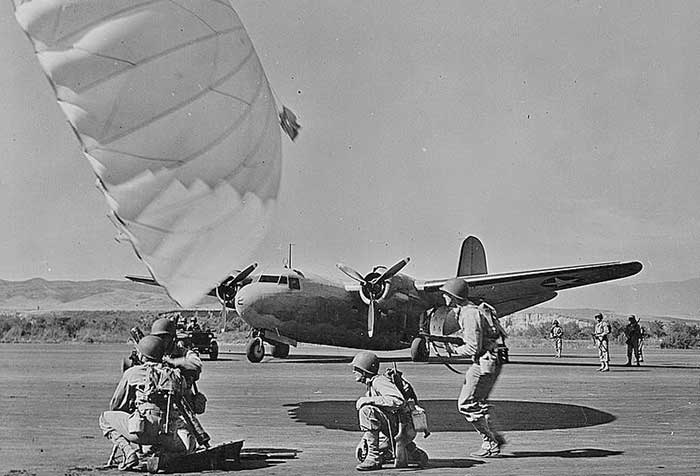
These US Marine Corps public relations pictures show Marines R3D-2s
on maneouvers in the early 1940s.
Note the large freight doors
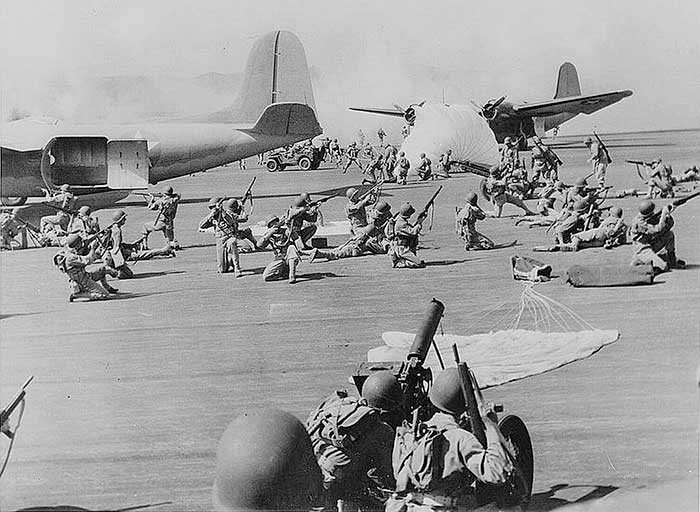
The compiler has endeavoured
to accurately document the detailed careers of the three Australian DC-5s,
and thanks fellow Australian historians John Hopton and Fred Niven for
sharing their research. Retired KLM Captain Ronald
Dijkstra has clarified a number of facts regarding the KLM DC-5 orders,
based on his extensive research, including access to KLM and British Airways documents.
DC-5 total production:
Built by Douglas Aircraft Co at El Segundo, California
Test flown at the adjacent Mines Field, which after WWII became Los Angeles International Airport (LAX)
411 NX21701, NC21701, Bu 08005 (R3D-3)
422 construction not completed
423 construction not completed
424 (PH-AXA), PJ-AIW, PK-ADC, VHCXB, 44-83231
425 construction not completed
426 (PH-AXB), (PH-AXG), PJ-AIZ, PK-ADD,
VHCXC, 44-83232, VH-ARD, Israel Air Force 1501
427 construction not completed
428 (PH-AXE), (PH-AXB), PK-ADB, VHCXA, 44-83230
429 construction not completed
430 (PH-AXG), (PH-AXE), PK-ADA, captured
at Batavia and flown to Japan
606 R3D-1 Bu 1901 US Navy. Crashed Mines Field California 1.6.40
607 R3D-1 Bu 1902 US Navy. Retired, struck-off charge .45
608 R3D-1 Bu 1903 US Navy. Retired, struck-off charge .45
609 R3D-2 Bu 1904 US Marine Corps. Destroyed enemy action 12.41
610 R3D-2 Bu 1905 US Marine Corps. Retired, struck-off charge 10.46
611 R3D-2 Bu 1906 US Marine Corps. Retired, struck-off charge 10.46
612 R3D-2 Bu 1907 US Marine Corps. Retired, struck-off charge 10.46
Note: British Airways Ltd ordered nine DC-5s which were allocated registrations G-AFYG to G-AFYO inclusive. The order was cancelled following a letter from Douglas dated 14 July 1939 advising that due to demand for military aircraft production, further DC-5s would not become available before 1940.
KLM Royal Dutch Airlines (Koninklijke Luchvaart Maatschappij) initially took an option on 13 December 1938 for four DC-5s to be flown on European routes. This was converted to a firm order for four DC-5-510 models, with Wright Cyclone R-1820G.102A engines.
Dutch researcher Herman Dekker reports that
documentation in KLM records indicates that the original registration
allocation for the four KLM DC-5s was
PH-AXA, PH-AXB, PH-AXE, PH-AXG to c/ns 424,
426, 428 and 430 respectively. However the uncompleted hull of c/n 426 on the
production line was used by Douglas for structural testing, and
replaced by another airframe which kept the same identity c/n 426. This
event seems to have triggered clerical confusion which changed the
allocations to PH-AXA, PH-AXG, VH-AXB, PH-AXE for c/ns 424, 426, 428
and 430 respectively. In the event none of these registrations were actually used.
In December 1939 KLM decided that the first two DC-5s would be diverted to KLM's West Indies Division at Hato Airport, Curacao in the Netherlands Antilles. PJ-AIW was delivered from the Douglas plant to Curacao before the German invasion of the Netherlands in May 1940, and PJ-AIZ arrived just a few days after. Because of the war situation in Europe, KLM decided that the second twoDC-5s nearing completion at the Douglas plant would beshipped to the Netherlands East Indies (now Indonesia) to be used by associate airline KNILM Koninklijke Nederlandsche-Indische Luchvaart Maatschappij at Batavia (now Jakarta).
The two West Indies aircraft served at Curacao for a year before they
were transferred to KNILM, joining the original two DC-5s, plus DC-2s,
DC-3s and Lockheed 14s on services within the Netherlands East Indies
and the international route from Amsterdam to Sydney, via Singapore and
Batavia.
Douglas DC-5s operated in Australia:
The
surviving three KNILM DC-5s were evacuated to Australia at the
beginning of March 1942 and put at the disposal of Allied transport
commands, flown by their civilian Dutch pilots. An original plan for
the Dutch civil airliners in Australia (DC-2s, DC-3s, DC-5s and
Lockheed 14s) was that they be offered to the Australian Government to
supplement Australian airline services, but this was overtaken by the
escalating American war effort in Australia. Supreme Commander General
Douglas Macarthur ordered that they be taken over by USAAF for miulutary transport duties.
On 19 March they were chartered by the US Government on a contract basis while negotiations for their purchase were conducted in US with the Netherlands Government in Exile, with Pan American Airways acting as agents for the US Government. The Dutch airline pilots were incensed at losing their aircraft, which they had been flying to the point of exhaustion carrying troops and supplies to build up defences of northern Australia against seemingly imminent Japanese invasion. The day before handover to USAAF the KNILM airline pilots staged a protest by flying their airliners at low altitude over Sydney Harbour, when two DC-3s and a DC-5 were flown under the Sydney Harbour Bridge twice.
KNILM pilot John Gyzemyter later described the situation:“ Politics were making it very difficult for us to continue operations. The USAAF confiscated all our spares and forced the airline to sell all ten remaining aircraft to the USAAF. The contract was signed which stipulated that between the 15th and 18th of May all ten aircraft were to be handed over to the USAAF. One of the transfer conditions was that all ten aircraft had to be flight tested before delivery. A deal was made with the KNILM maintenance crew to have all aircraft ready for the flight at the same time, so that they could be in the air simultaneously.
It had been agreed that all aircraft would meet up over Sydney Harbour because of the clear space away from built up areas. As all ten aircraft flew around someone spotted the Dutch destroyer “Tromp” at Woolloomooloo dock and started to buzz it, closely followed by other pilots, creating a spectacle never seen before in Sydney’s skies.
Frans van Breemen was the first to swing away and headed for ‘the bridge” closely followed by Deenik and Rab. We flew under the Sydney Harbour Bridge, turned around and flew back the way we had come. None of the others followed because they figured we would be in enough strife already and did not think it wise to add insult to injury.”
In early 1942 the only USAAF transport units operating in Australia were the 21st and 22nd Troop Carrier Squadrons, whose pilots were mostly recently graduated inexperienced American pilots whose ship to Philippines was diverted to Australia. They commenced flying the Dutch airliners and a mixed bag of obsolete aircraft evacuated from the fall of the Philippines and Netherlands East Indies.
The Directorate of Air Transport, Allied Air Forces (referred to in wartime documentation as both ADAT and DAT) was officially formed on 15 May 1942 to coordinate all military transport within Australia and courier runs from the mainland to the New Guinea war front. On the same day the purchase contract was finalised and all KNILM airliners in Australia were sold to USAAF Air Transport Command, South West Pacific Area. ADAT allocated radio callsigns to the transport aircraft it was assigned, initially in the VH-CX and VH-CA blocks. Although painted on the aircraft, these were NOT civil registrations. These callsigns became standard practice in Australia for the rest of the war for transport aircraft operated by RAAF, USAAF and ADAT.
A day in the life of the Directorate of Air Transport:
This ADAT daily transport status list below, dated 29 July 1942, was located by Alan Bovelt, and copied verbatim by Trevor Boughton, retaining typing errors and abbreviations. It clearly shows the mixed ADAT fleet to provide military transport needs to northern Australia and New Guinea in that desperate period. The DC-5 status was:
VHCXA at Wagga having engines changed.
VHCXB at Townsville Queensland loading supplies, probably for New Guinea
VHCXC at Archerfield Aerodrome, Brisbane u/s waiting for parts
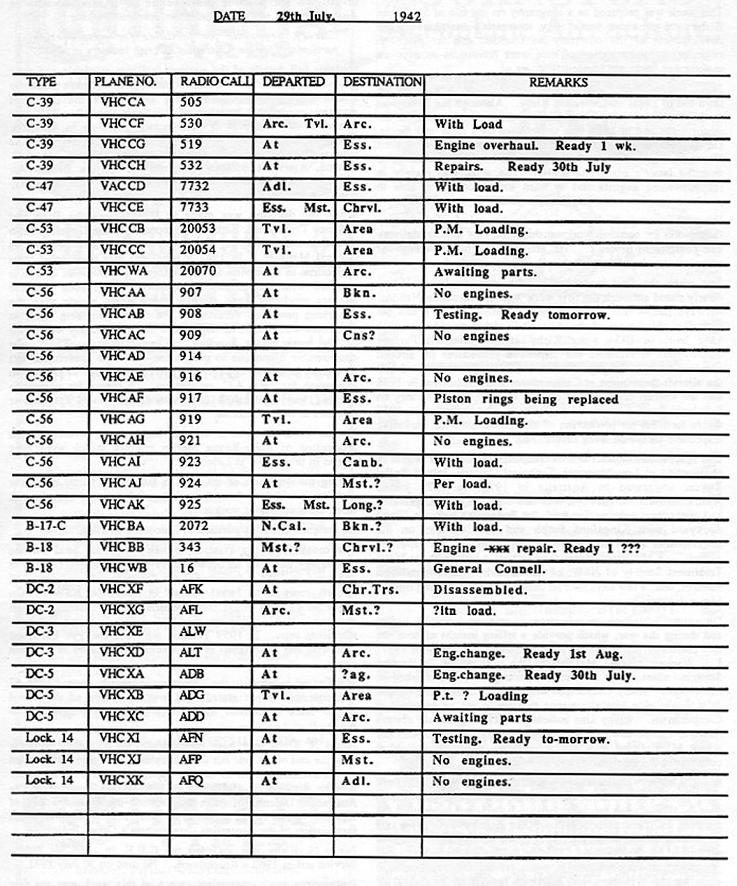
In December 1942 ADAT allocated aircraft to certain Australian civil airlines to be operated on contract on military courier services to northern Australia and New Guinea. The surviving Dutch DC-5 VHCXC (c/n 426) and Lockheed Lodestars were handed over to Australian National Airways. The airline was to carry out the required maintenance and provide the Captain for each flight, the copilot to be supplied by RAAF. In practice the crewing was done on more ad-hoc basis, sometimes with American copilots. ANA pilots recall that erlier in 1942 they had flown the other DC-5s VHCXA and VHCXB and trained military pilots on the type.
In May 1944 VHCXC was replaced on the military courier contract and leased to ANA for their continued use on their civil airline services.. Later ANA purchased this orphan DC-5 to maintain airline services prior to the post-war introduction of large numbers of military disposals Douglas C-47s. After retirement by ANA, the DC-5 was sold to New Holland Airways which was engaged in long-range charter flights bringing migrants to Australia from Europe and Britain. The world's last DC-5 ended its adventurous life in Israel as bomber and transport with the Israeli Air Force Chel Ha'Avir.
The following three Douglas DC-5s operated in Australia:
C/n 428 Douglas DC-5-511 Callsign VHCXA
| Built by Douglas Aircraft Co at El Segundo, near
Los Angeles, California. Completed as model DC-5-511 Powered by two 1100hp Wright Cyclone GR.1820-G102A |
|
| 30.8.39 | Ordered by British Airways as part
of an order for nine DC-5s. Registration reserved G-AFYM. The proposed delivery schedule required this aircraft to be flown to Floyd Bennet Field, New York in February 1940 for transport by sea to Britain. |
| .39 | After the declaration of war against Germany, the British Air Ministry instructed British Airways to cancel the order for DC-5 airliners. The down-payment funds lodged with Douglas to be transferred towards the purchase of other Douglas types for British military use. |
| c/n 428 transferred during construction to KLM - Koninklijke Luchvaart Maatschappij | |
| Completed to KLM order as Model DC-5-511 with seating for 22 passengers. |
|
| 22.5.39 | Registration reserved PH-AXE and name Eend (Duck) : later changed to PH-AXB: neither registration used |
| 5.40 |
Due to the German invasion of The Netherlands, KLM transferred this DC-5
to KNILM - Koninklijke Nederlandsche-Indische Luchvaart Maatschappij, Batavia, Netherlands East Indies |
| 22.7.40 | C/n 428 & 430 loaded on board the ship SS Silverwood at San Pedro wharves, Los Angeles. Both aircraft were painted in KLM markings but had their registrations and names covered over |
| 24.7.40 | Ship departed San Pedro |
| 25.7.40 | Douglas quoted "Delivery Date" to KNILM |
| 7.40 | Shipped to Java |
| 9.40 | Assembled at Batavia aerodrome |
| 9.40 | Registered PK-ADB KNILM, Batavia |
| 15.9.40 | KNILM press release announcing that two DC-5s had joined their fleet based at Batavia |
| 41 |
Due to increasing concern that Japan would enter World War II, NEI Government strengthened the military reserve. Civilian airline aircraft were included in the Netherlands East Indies Air Force reserve. PK-ADB was allocated NEAIF serial D-905 which was painted in small letters under the tailplane. |
| 30.4.41 | Arrived Sydney on first DC-5 visit to Australia, operating KNILM's
scheduled passenger service from Batavia in place of the usual Lockheed
14. Crew were Captains G. van Messel and T. Reyers. The DC-5 was used as a goodwill visit to promote the opening of a new KNILM office in Sydney. Polished metal finish with black registration |
| 3.5.41 | PK-ADB flew demonstration flights from Essendon Airport, Melbourne |
| 12.41 |
Due to the Japanese invasions of Java and Malaya, the KNILM fleet was painted in olive drab camouflage with light undersurfaces. |
| 9.2.42 | KNILM DC-5 PK-ADA damaged by staffing Japanese fighters on the ground at Kemajoran Aerodrome, Batavia |
| 2.42 | The remaining three DC-5s & other KNILM aircraft were ‘hidden’ at Tjikampek, north of Bandoeng, Java. A plan was made to save the planes from destruction by flying them to Australia. |
| 15.2.42 | KNILM scheduled services to Australia suspended due to Japanese invasion of NEI |
| 1.3.42 | Escaped to Australia. Flew Tjikampek-Bandoeng for refuelling, then to Singosari (Malang) for fuel before continuing to Australia carrying refugees. 50 meal packs were purchased from a hotel in Malang to feed the crews and evacuees of the six aircraft. Accompanied by KNILM DC-2s PK-AFK (later VHCXG) & PK-AFL (later VHCXH) and Lockheed 14 PK-AFP (later VHCXJ). |
| 2.3.42 | Departed Singosari (Malang) for Australia overnight,
flown by KNILM Captain G. van Messel. Arrived at Darwin, then to Alice Springs NT on 3.3.42. Continued to Sydney 4.3.42. |
| 3.3.42 | Broome was attacked by Japanese aircraft, with the loss of many lives and 22 allied aircraft, mostly Dutch. |
| 4.3.42 | Arrived Sydney. Australian Customs clearance at Mascot Aerodrome, Sydney "PK-ADB arrived from Batavia" |
| 19.3.42 | Australian Government documents indicate that all KNILM aircraft in Australia were to be transferred to the Australian Government for a token 5 pounds each. They were planned to supplement Australian airlines, which had lost much of their fleets due to RAAF impressments. However General Macarthur, Supreme Commander SWPA ordered the Dutch airliners to be transferred to USAAF in Australia for military transport duties. |
| 19.3.42 | Taken over by USAAF Air Transport Command, South West Pacific Area in a charter arrangement pending their purchase. Flown by Dutch crews carrying US cargo and personnel in Australia |
| 28.3.42 | Struck-off KNILM charge, now operated by USAAF in Australia |
| c4.42 | photo PK-ADB at Essendon painted in olive drab |
| 14.5.42 |
Prior to takeover by USAAFIA , each Dutch transport aircraft was required to be test flown as part of the maintenance sign-off. PK-ADB took part in the KNILM pilot protest formation flyover of Sydney city and Sydney Harbout. |
| 15.5.42 | PK-ADB purchased by USAAF Air Transport Command, South West Pacific Area |
| 5.42 |
Allocated temporary USAAF serial "41-428". This was a temporary identity applied to transport aircraft taken over by USAAF in Australia in this period, Fiscal Year 41- + aircraft c/n |
| 15.5.42 | Directorate of Air Transport, Allied Air Forces (ADAT) was formally established to manage military transport aircraft operations in Australia by RAAF, USAAF and Australian civil airlines flying leased military aircraft (Qantas, ANA, Guinea Airways). |
| 15.5.42 | ADAT allocated radio callsign VHCXA. The first group of transport aircraft assigned to ADAT were given callsigns in the VH-CX and VH-CA blocks, which were painted in white on the camouflaged aircraft. |
| 20.5.42 | VHCXA on strength with 21 Troop Carrier Squadron, 374 Troop Carrier Group, 5th Air Force, USAAF. 21 TCS was based at Archerfield Airport, Brisbane operating ADAT scheduled transport services with a variety of aircraft types, mostly to Townsville and New Guinea. |
| 6.42 | Reported damaged in an overshoot while landing at Parafield SA, flown by a USAAF crew |
| 29.7.42 | ADAT daily aircraft status sheet shows CXA having engine change at RAAF Forest Hill, Wagga NSW, expected to be ready the next day |
| 8.42 | VHCXA in service with 21 TCS. |
| 17.8.42 | Destroyed by fire when straffed at Wards Strip, Port Moresby, New Guinea during a Japanese air raid |
| 5.43 | Components from VHCXA used to repair DC-5 VHCXC at Archerfield Qld following fire damage on 19 May 1943. |
| 14.6.44 | USAAF book-keeping exercise to cover the acquisition of the Dutch
aircraft in Australia in 1942: Approval of Purchase Order No.44068, from Netherlands, under Order AC6838: allotment of type designation and serial number: C-110-DE 44-83230. |
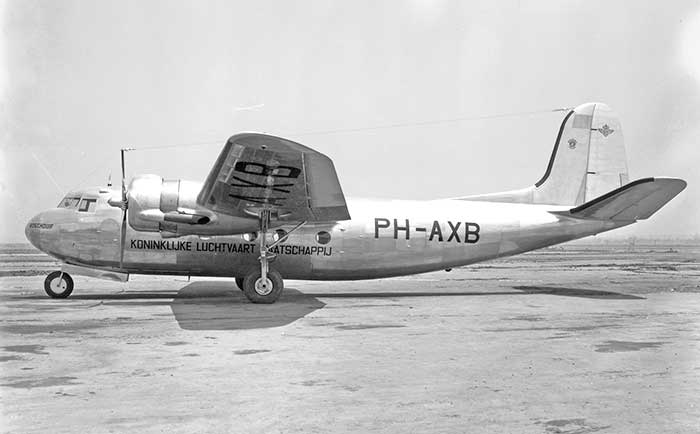
It was shipped to Netherlands East Indies to become PK-ADB. Photo: Douglas, via Harry S. Gann
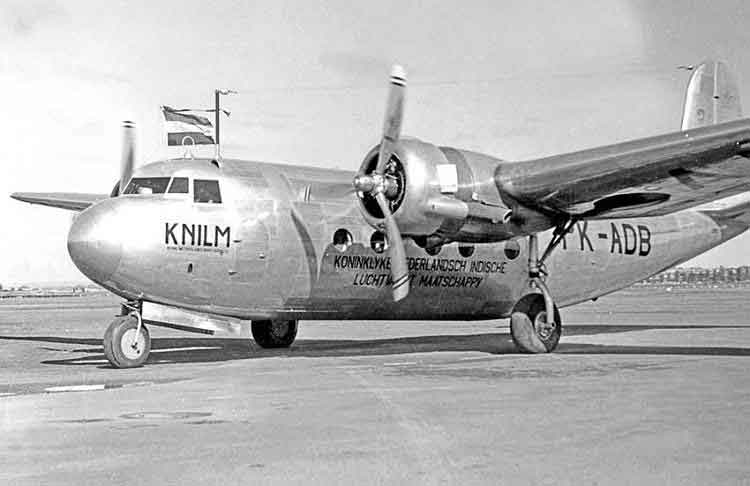
KNILM's
first DC-5 service to
Sydney.
John
Hopton Collection
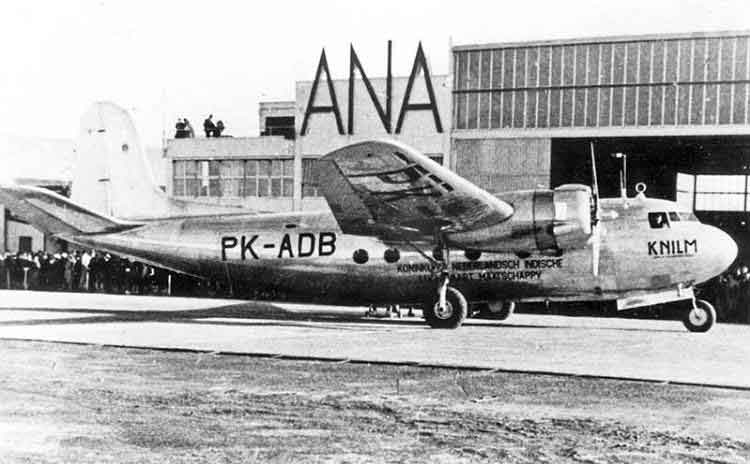
Essendon Airport, Melbourne 3 May 1941 on the KNILM promotional visit. John Hopton Collection
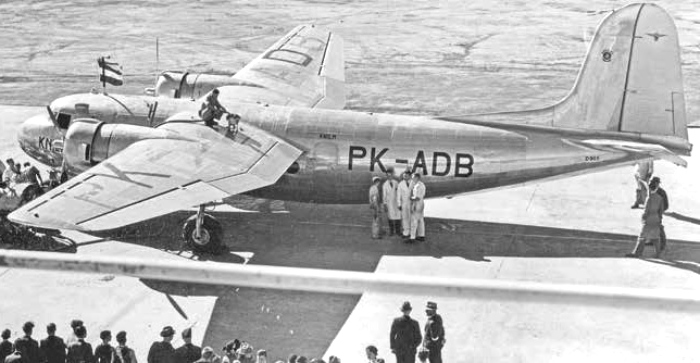
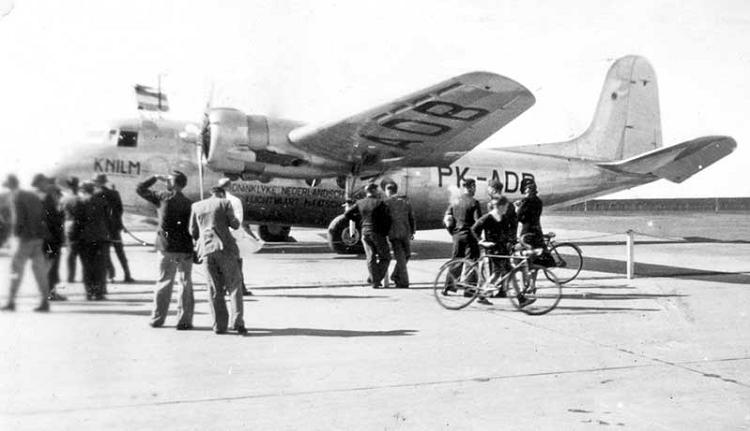
Essendon May 1941. Geoff Goodall collection
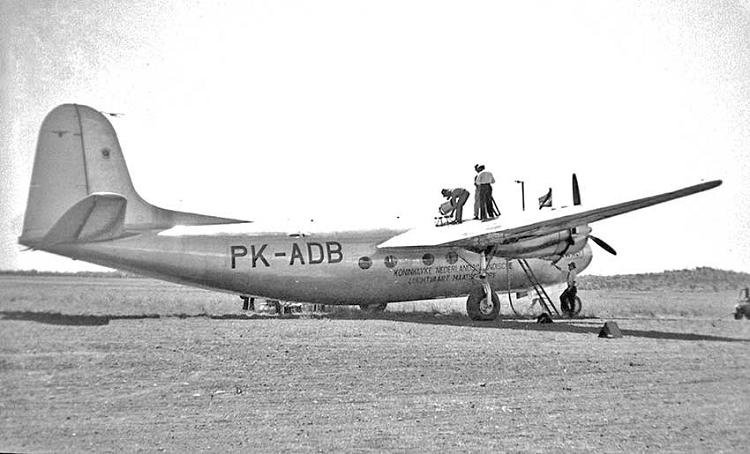
PK-ADB refuelling at Cloncurry Queensland in the Australian outback during 1941. Ben Dannecker collection
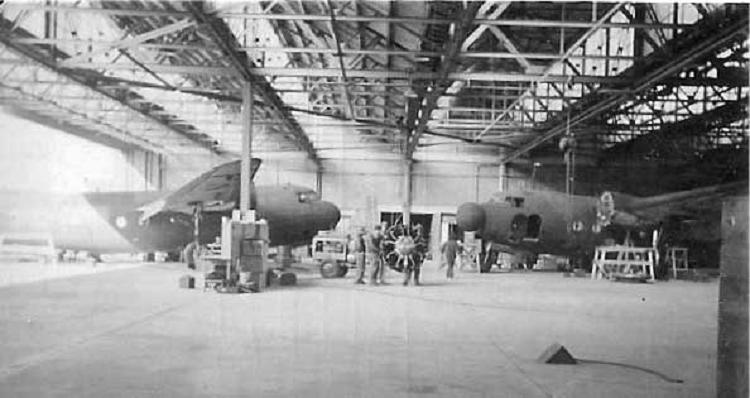
VHCXA and another DC-5 at RAAF Forest Hill, Wagga NSW in July 1942
while having engines changed.
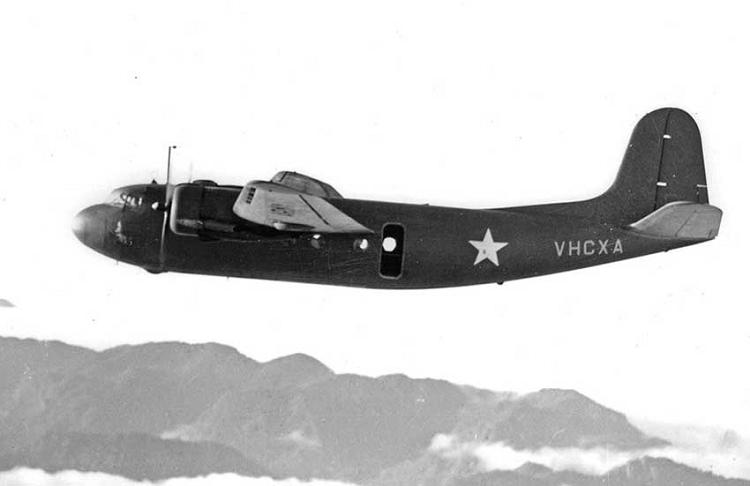
New Guinea August 1942. Photo Australian War Memorial
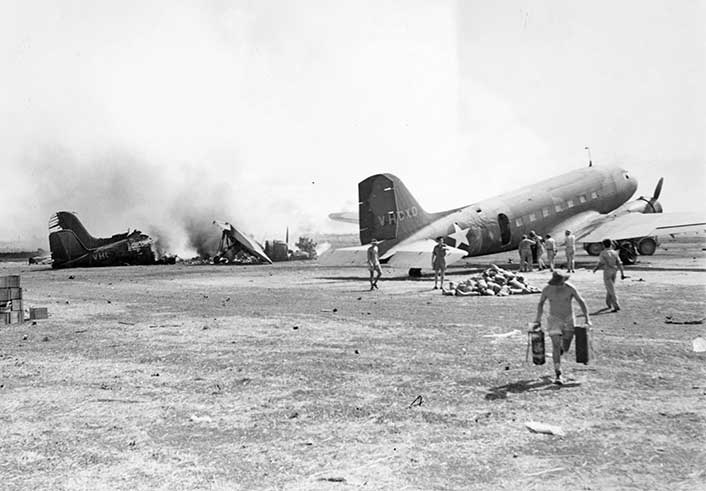
Port Moresby 17 August 1942: VHCXA burning, Dutch DC-3 VHCXD damaged. Photo: Dayton Daily News Archives
C/n 424 Douglas DC-5-510, to DC-5-511 Callsign VHCXB
| Built by Douglas Aircraft Co at El Segundo, near
Los Angeles, California. Completed as model DC-5-510 Powered by two 1100hp Wright Cyclone GR.1820-G102A |
|
| 30.8.39 | Ordered by British Airways as part
of an order for nine DC-5s. Registration reserved G-AFYI. The proposed delivery schedule required this aircraft to be flown to Floyd Bennet Field, New York on 22 January 1940 for transport by sea to Britain. |
| .39 | After the declaration of war against Germany, the British Air Ministry instructed British Airways to cancel the order for DC-5 airliners. The down-payment funds lodged with Douglas to be transferred towards the purchase of other Douglas types for British military use. |
| .39 | c/n 424 transferred during construction to KLM - Koninklijke Luchvaart Maatschappij |
| Completed as Model DC-5-510 fitted with a forward cargo bay and seating for 17 passengers. The other three KLM aircraft were designated DC-5-511 fitted for 22 passengers |
|
| Completed with the original horizontal tailplane design. Meanwhilke test flying of the prototype had revealed airflow buffeting, which was eliminated by giving the tailplane marked dihedral. C/n 424 was modified at the El Segundo factory with the dihedral tailplane. | |
| Registration reserved PH-AXA and name Alk (Razorbill): not taken up | |
| 11.39 | KLM decided that the first two DC-5s would be delivered to KLM West Indies
Division, Curacao, Netherlands West Indies Registration PJ-AIW allocated |
| 30.4.40 | Departed Los Angeles on delivery flight to Miami, Florida via Phoenix & Houston. |
| 2.5.40 | Arrived Miami, Florida |
| 4.5.40 | Testflown at Miami on final acceptance flight by KLM West Indies Division |
| 6.5.40 | Departed Miami on delivery flight |
| 8.5.40 | Arrived Curacao via Port au Prince, Haiti |
| 8.5.40 | Douglas "delivery date" to customer |
| 8.5.40 | Certificate of Registration date: PJ-AIW KLM
West Indies Division, Curacao. Named Wakago (Wild Goose) |
| KLM West Indies Division operated airline services to Ciudad Trujillo, Dominican Republic, Maracaibo, Venezuela, Port au Prince, Haiti, Miami, Port of Spain, Trinidad & Surinam. | |
| .41 |
Due
to the war situation in Europe and the Pacific, the Netherlands
Government in Exile in New York instructed KLM to sell the two West
Indies Division DC-5s to the Netherlands East Indies Government for use
by the NEI Air Force. By the time of their arrival in NEI, the NEI Government had decided to instead lease them to KNILM |
| 10.6.41 | PJ-AIW departed Curacao for Miami flown by a KLM crew. At Miami handed over to a Douglas Aircraft crew who ferried the aircraft to Santa Monica, California where it was modified in the Douglas Santa Monica plant to Model DC-5-511 with the same seating for 22 passengers as the other three KLM DC-5s. It was then dismantled and packed for shipping to Java |
| 10.6.41 | Certificate of Registration date: PK-ADC KNILM - Koninklijke Nederlandsche-Indische Luchvaart Maatschappij, Batavia, Netherlands East Indies |
| 9.41 | Ship arrived at Tanjung Priok, Java, assembled by KNILM at Batavia Airport |
| 29.9.41 | Entered service with KNILM on passenger services |
| Due to increasing concern that Japan would enter World War II, NEI Government strengthened the military reserve. Civilian airline aircraft were included in the Netherlands East Indies Air Force reserve. PK-ADC was allocated NEAIF serial D-90_ which was painted in small letters under the tailplane. |
|
| 12.41 | Due to the Japanese invasions of Java and Malaya, the KNILM fleet was painted in olive drab camouflage with light undersurfaces. |
| 9.2.42 | KNILM DC-5 PK-ADA damaged by staffing Japanese fighters on the ground at Kemajoran Aerodrome, Batavia |
| 15.2.42 | KNILM scheduled services to Australia suspended due to Japanese invasion of NEI |
| 2.42 |
The remaining three DC-5s & other KNILM aircraft were ‘hidden’ at Tjikampek, north of Bandoeng, Java. Decision made to save the aircraft from the enemy by flying them to Australia. |
| 1.3.42 | Escaped to Australia. Flew Tjikampek-Bandoeng for refuelling, then to Singosari (Malang) for fuel before continuing to Australia carrying refugees. 50 meal packs were purchased from a hotel in Malang to feed the crews and evacuees of the six aircraft. Accompanied by KNILM DC-2s PK-AFK (later VHCXG) & PK-AFL (later VHCXH) and Lockheed 14 PK-AFP (later VHCXJ). |
| 2.3.42 | Departed Singosari (Malang) for Australia overnight, flown by KNILM Captain Dirk Rab with copilot copilot John Gyzemyter. |
| They could not use the airline route via Bali to Darwin because Bali was already taken by the Japanese. At Broome WA, NEI military aircraft were also evacuating refugees, including Dornier and Catalina flying boats on Broome harbour. KNILM airliners arriving at Broome found fuel was scarce and needed for military aircraft. | |
| 3.3.42 | Captain Dirk Rab planned to refuel at Broome. However, because of long lines of bombers waiting to refuel at Broome, he decided to fly to Derby to refuel. The aircraft ran out of fuel before reaching Derby and made a successful forced landing on dry mud flats outside Derby. They obtained enough fuel to fly back to Broome, where PK-ADC had its tanks filled. Departed Broome only minutes prior to a major Japanese air attack on Broome airfield, which destroyed 22 allied aircraft and killed many service personnel and civilians. Hearing radio reports of the raid the crew of PK-ADC flew low until they were well away from Broome, heading for Alice Springs, then Sydney. |
| 4.3.42 | Australian Customs clearance at Mascot Aerodrome, Sydney "arrived from Batavia" |
| 19.3.42 | Australian Government documents indicate that all KNILM aircraft in Australia were to be transferred to the Australian Government for a token 5 pounds each. They were planned to supplement Australian airlines, which had lost much of their fleets due to RAAF impressments. However General Douglas Macarthur, Supreme Commander SWPA ordered the Dutch airliners to be transferred to USAAF in Australia for military transport duties. |
| 19.3.42 | Taken over by USAAF Air Transport Command, South West Pacific Area in a charter arrangement pending their purchase. Flown by Dutch crews carrying US cargo and personnel in Australia |
| 20.3.42 | PK-ADC arrived Mascot Aerodrome, Sydney from Perth via Melbourne (Customs records) |
| 28.3.42 | Struck-off KNILM charge, now operated by USAAF |
| It has been reported that this DC-5 was intended to be a personal aircraft for General Douglas Macarthur, Supreme Commander SWPA while he was based in Australia. No evidence of this has been found, nor a report that cabin fittings installed for his use were stripped from this DC-5 at Essendon and installed in the KNILM DC-3 PK-ALW (c/n 1944) in July 1942 when it was prepared for Macarthur's use, radio callsign VHCXE. | |
| 14.5.42 |
KNILM pilot John Gyzemyter later wrote: “Politics were making it very difficult
for us to continue operations. The USAAF confiscated all our
spares and forced the airline to sell all ten remaining aircraft
to the USAAF.
The contract was signed which stipulated
that between the 15th and 18th of May all ten aircraft were to be
handed over to the USAAF. One of the transfer conditions was
that all ten aircraft had to be flight tested before delivery. A
deal was made with the KNILM maintenance crew to have all aircraft
ready for the flight at the same time, so that they could be in
the air simultaneously.
When discussing which crew should
fly which aircraft a few sentiments were expressed. Frans
van Breemen wanted to fly DC-3 PK-AFK. Peter Deenik wanted
PK-ALW and Dirk Rab asked me to join him as his flight engineer
on PK-ADC, the DC-5 that made our escape from Java possible. It
had been agreed that all aircraft would meet up over Sydney Harbour
because of the clear space away from built up areas. As all
ten aircraft flew around someone spotted the Dutch destroyer “Tromp”
at Woolloomooloo and started to buzz it, closely followed by other
pilots, creating a spectacle never seen before in Sydney’s skies.
Frans van Breemen was the first to
swing away and headed for ‘the bridge” closely followed by Deenik
and Rab. We flew under the Sydney Harbour Bridge, turned around
and flew back the way we had come. None of the others followed
because they figured we would be in enough strife already and did
not think it wise to add insult to injury.”
|
| 15.5.42 | PK-ADC purchased by USAAF Air Transport Command, South West Pacific Area |
| 15.5.42 | Directorate of Air Transport, Allied Air Forces (ADAT) was formally established to manage military transport aircraft operations in Australia by RAAF, USAAF and Australian civil airlines flying leased military aircraft (Qantas, ANA, Guinea Airways). |
| 5.42 | Allocated temporary USAAF serial "41-424". This was a temporary identity applied to transport aircraft taken over by USAAF in Australia in this period, Fiscal Year 41- + aircraft c/n |
| 15.5.42 | ADAT allocated radio callsign VHCXB. The first group of transport aircraft were given callsigns in the VH-CX and VH-CA blocks, which were painted in white on the camouflaged aircraft. |
| 20.5.42 | Operated by 21 Troop Carrier Squadron, 374 Troop Carrier Group, USAAF 5th Air Force: based at Archerfield Aerodrome, Brisbane. Operated a courier service Brisbane-Port Moresby carrying troops to New Guinea and some supplies. Only small items of cargo could be carried because of the lack of cargo door. |
| 29.7.42 | ADAT daily aircraft status list shows CXB at Townsville loading cargo |
| 4.11.42 | Last mention in 21TCS records |
| 6.11.42 | Crashed in forced landing 30 miles east of Charleville Qld |
| 36 Squadron News Bulletin issue 13 July 1993 includes
an interview with Arch Widt: In June 1942 Widt
and nine other RAAF pilots were instructed to report to USAAF 22TCS
at Essendon. On arrival they were informed that five were to remain
with 22TCS and five were to be transferred to 21TCS at Archerfield.
Widt went to 21TCS at Brisbane.
"When
we joined the 21st T.C.S. in June 1942 it had DC-2’s, DC-5’s, two
B-18 Douglas Digby bombers, some older DC-3’s (C-53’s) and only
two C-47’s. The pilots flew whatever type happened to be available
and swapped regularly from one type to another. Initially
the Australians flew as co-pilots but we became DC-3 Captains after
only a few months.
On
one flight as Captain I set off from Archerfield for Daly Waters
in DC-5 VH-CXB with U.S. Lieut. Barney Cederholm as co-pilot. We
refuelled at Charleville and Cloncurry and all was going well until
one engine showed increasing oil temperature and decreasing oil
pressure. After a further ten minutes the gauge showed no
oil pressure at all, so the engine was shut down and its airscrew
was feathered. We reached Daly Waters after 1.5 hours on one
engine and a satisfactory landing was made. There was quite
a delay before a replacement engine could be obtained but after
three weeks one was flown to us from Archerfield. When complete,
we took off from Daly Waters with the failed engine, tools and other
equipment on board. Everything went well during the flight
to Cloncurry but when we touched down we found that we had no brakes
so we took straight off again. From a four gallon tin of hydraulic
oil which was always carried in the cockpit, we topped up the hydraulic
system and a satisfactory landing was then made. After staying
overnight at Cloncurry the next leg to Charleville was without incident.
At
Charleville, on 6th November 1942, we took on board about 20 U.S.
Servicemen who were heading to Brisbane on leave. After climbing
to 6000 feet. the “new” engine, without warning, lost power completely.
We feathered the airscrew but were unable to maintain height
even with the remaining engine flat out. Having noted from
our map that there was an emergency landing strip near Lurnea Siding,
about 30 miles east of Charleville, we headed for it. A satisfactory
touch-down was made but unfortunately, on the strip, there was an
anthill which was hit at about 70 m.p.h. causing the undercarriage
strut to be pushed through a wing. Substantial damage to the
airframe resulted but nobody was injured. . . . . Eventually
the crew and passengers were taken back to Charleville by Americans
from the Charleville base."
|
|
| VHCXB's components were recovered and transported to Archerfield for spare parts | |
| 43 | Gus Morees, a Dutch pilot with RAAF No.18 (Netherlands) Squadron recalls seeing the wreck of a DC-5 on the side of an airstrip in the Cloncurry area in late 1943. |
| 14.6.44 | USAAF book-keeping exercise to cover the acquisition of the Dutch
aircraft in Australia in 1942: Approval of Purchase Order No.44068, from Netherlands, under Order AC6838: allotment of type designation and serial number: C-110-DE 44-83231. |

PJ-AIW "Wakago" pre-delivery photograph over California. Photo: Douglas via Harry S. Gann
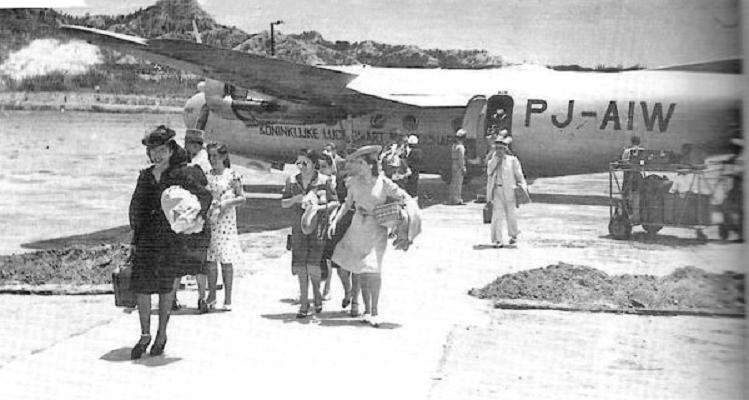
Curacao, Netherlands West Indies 1940
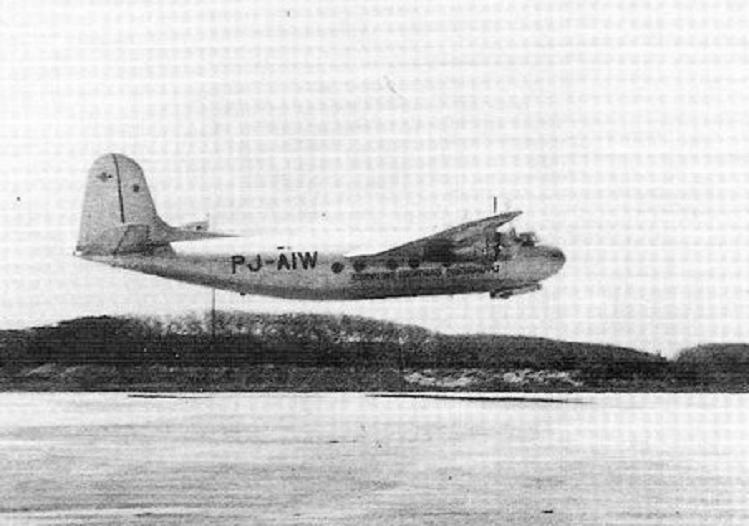
Departing Curacao, while service with KLM West Indies Division
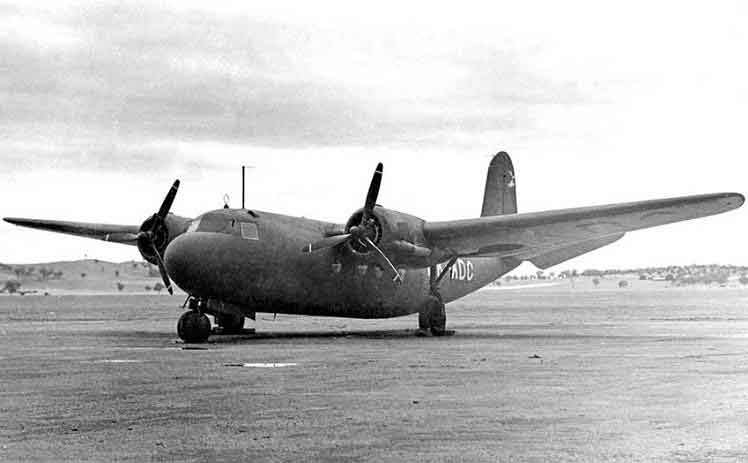
PK-ADC at RAAF Forest Hill, Wagga NSW in 1942. John Hopton Collection
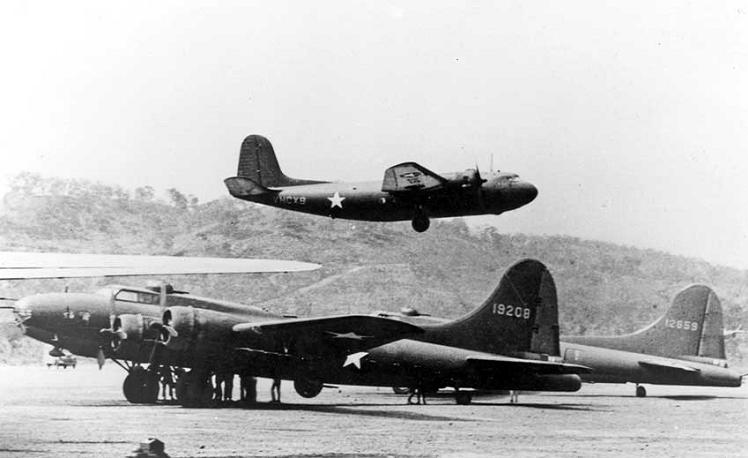
VHCXB at Seven Mile Airfield, Port Moresby, New Guinea in July 1942. Australian War Memorial
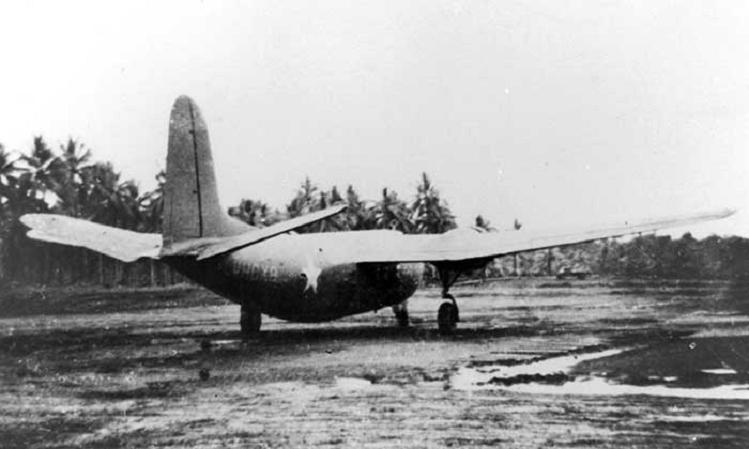
VHCXB at Milne Bay, New Guinea 1942. ]Geoff Goodall collection
C/n 426
Douglas DC-5-511 Bali
Clipper
Callsign VHCXC, to VH-ARD, to Israel
| .39 | Built by Douglas Aircraft Co at El Segundo, near
Los Angeles, California. Completed as model DC-5-511 Powered by two 1100hp Wright Cyclone GR.1820-G102A |
||||||||||||||||||||||||||||||||||||||||||||||||||||||||||||||||||
| 30.8.39 | Ordered by British Airways as part
of an order for nine DC-5s. Registration reserved G-AFYK. The proposed delivery schedule required this aircraft to be flown to Floyd Bennet Field, New York in February 1940 for transport by sea to Britain. |
||||||||||||||||||||||||||||||||||||||||||||||||||||||||||||||||||
| .39 | After the declaration of war against Germany, the British Air Ministry instructed British Airways to cancel the order for DC-5 airliners. The down-payment funds lodged with Douglas to be transferred towards the purchase of other Douglas types for British military use. | ||||||||||||||||||||||||||||||||||||||||||||||||||||||||||||||||||
| c/n 426 transferred during construction to KLM - Koninklijke Luchvaart Maatschappij | |||||||||||||||||||||||||||||||||||||||||||||||||||||||||||||||||||
| Completed to KLM order as Model DC-5-511 with seating for 22 passengers. Engines were 850 hp Wright Cyclone GR.1820-F62. | |||||||||||||||||||||||||||||||||||||||||||||||||||||||||||||||||||
| Completed incorporating the revised dihedral horizontal tailplane | |||||||||||||||||||||||||||||||||||||||||||||||||||||||||||||||||||
| Registration reserved PH-AXB and name Boschduif
(Wood Duck). Later changed to PH-AXG. Neither registration used |
|||||||||||||||||||||||||||||||||||||||||||||||||||||||||||||||||||
| 11.39 |
KLM decided that the first two DC-5s would be delivered to KLM West Indies Division, Curacao, Netherlands West Indies | ||||||||||||||||||||||||||||||||||||||||||||||||||||||||||||||||||
| 5.40 | Registered PJ-AIZ KLM West Indies Division, Curacao. Name Zonvogel (Humming Bird) | ||||||||||||||||||||||||||||||||||||||||||||||||||||||||||||||||||
| 5.5.40 | Departed Los Angeles for Miami, Florida on delivery to West Indies. | ||||||||||||||||||||||||||||||||||||||||||||||||||||||||||||||||||
| 16.5.40 | Testflown at Miami on final acceptance flight by KLM West Indies Division | ||||||||||||||||||||||||||||||||||||||||||||||||||||||||||||||||||
| 19.5.40 | Departed Miami on delivery flight to Curacao via Port au Prince, Haiti | ||||||||||||||||||||||||||||||||||||||||||||||||||||||||||||||||||
| 20.5.40 | Arrived Hato Airport, Curacao | ||||||||||||||||||||||||||||||||||||||||||||||||||||||||||||||||||
| KLM West Indies Division operated airline services to Ciudad Trujillo, Dominican Republic, Maracaibo, Venezuela, Port au Prince, Haiti, Miami, Port of Spain, Trinidad & Surinam. | |||||||||||||||||||||||||||||||||||||||||||||||||||||||||||||||||||
| .41 | Due
to the war situation in Europe and the Pacific, the Netherlands
Government in Exile in New York instructed KLM to sell the two West
Indies Division DC-5s to the Netherlands East Indies Government for use
by the NEI Air Force. By the time of their arrival in NEI, the NEI Government had decided to instead lease them to KNILM |
||||||||||||||||||||||||||||||||||||||||||||||||||||||||||||||||||
| 29.5.41 | PJ-AIZ departed Curacao for Miami flown by a KLM crew. At Miami handed over to a Douglas Aircraft crew who ferried the aircraft to Santa Monica, California where it was dismantled at the Douglas plant and packed for shipping to Java | ||||||||||||||||||||||||||||||||||||||||||||||||||||||||||||||||||
| 29.5.41 | Certificate of Registration PK-ADD KNILM - Koninklijke Nederlandsche-Indische Luchvaart Maatschappij, Batavia, Netherlands East Indies | ||||||||||||||||||||||||||||||||||||||||||||||||||||||||||||||||||
| 9.41 | Ship arrived at Tanjung Priok, Java, assembled by KNILM at Batavia Airport |
||||||||||||||||||||||||||||||||||||||||||||||||||||||||||||||||||
| 9.41 | Assembled by KNILM at Batavia | ||||||||||||||||||||||||||||||||||||||||||||||||||||||||||||||||||
| 29.9.41 | Entered service with KNILM on passenger services | ||||||||||||||||||||||||||||||||||||||||||||||||||||||||||||||||||
| 41 |
Due to increasing concern that Japan would enter World War II, NEI Government strengthened the military reserve. Civilian airline aircraft were included in the Netherlands East Indies Air Force reserve. PK-ADD was allocated NEAIF serial D-90_, which was painted in small letters under the tailplane. |
||||||||||||||||||||||||||||||||||||||||||||||||||||||||||||||||||
| 12.41 | Due to the Japanese invasions of Java and Malaya, the KNILM fleet was painted in olive drab camouflage with light undersurfaces. | ||||||||||||||||||||||||||||||||||||||||||||||||||||||||||||||||||
| 9.2.42 | KNILM DC-5 PK-ADA damaged by staffing Japanese fighters on the ground at Kemajoran Aerodrome, Batavia | ||||||||||||||||||||||||||||||||||||||||||||||||||||||||||||||||||
| 2.42 | The remaining three DC-5s and other KNILM aircraft were ‘hidden’ at Tjikampek, north of Bandoeng, Java. A plan was made to save the planes from destruction by flying them to Australia. | ||||||||||||||||||||||||||||||||||||||||||||||||||||||||||||||||||
| 15.2.42 | KNILM scheduled services to Australia suspended due to Japanese invasion of NEI | ||||||||||||||||||||||||||||||||||||||||||||||||||||||||||||||||||
| 1.3.42 | The three surviving KNILM DC-5s, two DC-2s and one Lockheed 14
departed Bandoeng, Java for Australia with refugees to escape the
Japanese invasion of NEI. They refuelled at Malang where 50 meal packs
were purchased from a hotel in Malang to feed the crews and evacuees
of the six aircraft. They then flew overnight to Broome WA, where
NEI military aircraft were also evacuating refugees, including Dornier
and Catalina flying boats on Broome harbour. They could not take the
usual route via Bali to Darwin because Bali had already been taken
by the Japanese. On arrival at Broome they found fuel was scarce and needed for military aircraft, but they managed to take on enough fuel to continue that same day. The next day 3 March 1942 Broome suffered its first attack by Japanese aircraft. |
||||||||||||||||||||||||||||||||||||||||||||||||||||||||||||||||||
| 1.3.42 | Escaped to Australia. Flew Tjikampek-Bandoeng for refuelling, then to Singosari (Malang) for fuel before continuing to Australia carrying refugees. 50 meal packs were purchased from a hotel in Malang to feed the crews and evacuees of the six aircraft. Accompanied by KNILM DC-2s PK-AFK (later VHCXG) & PK-AFL (later VHCXH) and Lockheed 14 PK-AFP (later VHCXJ). | ||||||||||||||||||||||||||||||||||||||||||||||||||||||||||||||||||
| 2.3.42 | Departed Singosari (Malang) for Australia overnight, flown by KNILM Captain Pieter Deenik. | ||||||||||||||||||||||||||||||||||||||||||||||||||||||||||||||||||
| 3.3.42 | Reached Daly Waters NT. | ||||||||||||||||||||||||||||||||||||||||||||||||||||||||||||||||||
| 3.3.42 | Broome was attacked by Japanese aircraft, with the loss of 22 allied aircraft and many lives. | ||||||||||||||||||||||||||||||||||||||||||||||||||||||||||||||||||
| 4.3.42 | PK-ADD Australian Customs clearance at Mascot Aerodrome, Sydney "arrived from Batavia" | ||||||||||||||||||||||||||||||||||||||||||||||||||||||||||||||||||
| 19.3.42 | Australian Government documents indicate that all KNILM aircraft in Australia were to be transferred to the Australian Government for a token 5 pounds each. They were planned to supplement Australian airlines, which had lost much of their fleets due to RAAF impressments. However General Macarthur, Supreme Commander SWPA ordered the Dutch airliners to be transferred to USAAF in Australia for military transport duties. | ||||||||||||||||||||||||||||||||||||||||||||||||||||||||||||||||||
| 19.3.42 | Taken over by USAAF Air Transport Command, South West Pacific Area in a charter arrangement pending their purchase. Flown by Dutch crews carrying US cargo and personnel in Australia | ||||||||||||||||||||||||||||||||||||||||||||||||||||||||||||||||||
| 28.3.42 | Struck-off KNILM charge, now operated by USAAF | ||||||||||||||||||||||||||||||||||||||||||||||||||||||||||||||||||
| 15.5.42 | PK-ADD purchased by USAAF Air Transport Command, South West Pacific Area | ||||||||||||||||||||||||||||||||||||||||||||||||||||||||||||||||||
| 15.5.42 | Directorate of Air Transport, Allied Air Forces (ADAT) was formally established to manage military transport aircraft operations in Australia by RAAF, USAAF and Australian civil airlines flying leased military aircraft (Qantas, ANA, Guinea Airways). | ||||||||||||||||||||||||||||||||||||||||||||||||||||||||||||||||||
| 5.42 | Allocated temporary USAAF serial "41-426". This was a temporary identity applied to transport aircraft taken over by USAAF in Australia in this period, Fiscal Year 41- + aircraft c/n | ||||||||||||||||||||||||||||||||||||||||||||||||||||||||||||||||||
| 18.5.42 | Allocated radio callsign VHCXC. The first group of transport aircraft assigned to ADAT were given callsigns in the VH-CX and VH-CA blocks, which were painted in white on the camouflaged aircraft. | ||||||||||||||||||||||||||||||||||||||||||||||||||||||||||||||||||
| 5.42 | Operated by 21 Troop Carrier Squadron, 374 Troop Carrier Group, USAAF 5th Air Force : based at Archerfield Airport, Brisbane. Operated a courier service Brisbane-Port Moresby carrying troops to New Guinea and some supplies. Only small items of cargo could be carried because of the lack of cargo door. | ||||||||||||||||||||||||||||||||||||||||||||||||||||||||||||||||||
| 20.5.42 | 21TCS records include DC-5 CXC on strength | ||||||||||||||||||||||||||||||||||||||||||||||||||||||||||||||||||
| 29.7.42 | ADAT daily aircraft status sheet shows CXC at Archerfield, awaiting parts | ||||||||||||||||||||||||||||||||||||||||||||||||||||||||||||||||||
| 1.10.42 | Last mention of CXC in 21 TCS records | ||||||||||||||||||||||||||||||||||||||||||||||||||||||||||||||||||
| 12.42 | Agreement signed between ADAT and certain Australian airlines to
take over military transport aircraft for military transport duties.
The airlines would carry out maintenance on the aircraft and provide
a Captain, while the copilot would be supplied by RAAF. The aircraft
would carry military loadings under the direction of the Allied Directorate
of Air Transport. Australian National Airways, Melbourne was initially allocated DC-5 VHCXC, DC-3 VH-CXD and Lockheed Lodestars VHCAF & VHCAJ. |
||||||||||||||||||||||||||||||||||||||||||||||||||||||||||||||||||
| 16.12.42 | CXC at Archerfield Aerodrome, Brisbane for overhaul and re-engining
prior to operation by ANA. Re-engined with two 900hp Wright Cyclone GR.1820-G102As, the standard DC-3 engines used on ANA DC-3s |
||||||||||||||||||||||||||||||||||||||||||||||||||||||||||||||||||
| 25.12.42 | Testflown Archerfield by ANA Senior Pilot Captain P. T. L. Taylor | ||||||||||||||||||||||||||||||||||||||||||||||||||||||||||||||||||
| 25.12.42 | DCA issued an Australian CofA No. X-5. Seating for 23 passengers
and 2 crew. The X- series of Certificates of Airworthiness were a specific group allocated by DCA for military transport aircraft on loan to Australian airlines to carry military loadings under the recent agreement between ADAT and airlines. These aircraft were not civil registered, but were operated under their military identity and were referred to by their allotted radio callsign which was painted in white over the camouflage paintwork. |
||||||||||||||||||||||||||||||||||||||||||||||||||||||||||||||||||
| 26.12.42 | Operated from this date by Australian National
Airways Pty Ltd, Melbourne Vic. CXC was based at Archerfield to fly a regular courier service to Townsville and Port Moresby for ADAT, mainly carrying troops northbound and returning with casualties and other personnel. |
||||||||||||||||||||||||||||||||||||||||||||||||||||||||||||||||||
| 26.12.42 | CXC departed Archerfield on first ANA military charter | ||||||||||||||||||||||||||||||||||||||||||||||||||||||||||||||||||
| 7.1.43 | DCA internal memo: Lodestar VH-CAB and DC-5 VH-CXC are now equipped with Command Radio in addition to wireless equipment supplied by U.S. Air Corps and installed by U.S. Army - weight of equipment is not known.” | ||||||||||||||||||||||||||||||||||||||||||||||||||||||||||||||||||
| 29.4.43 | CXC made a forced landing at Bowen Qld at 1.03pm due engine failure, no damage to airframe. It was en route Garbutt Air Base, Townsville to Archerfield. Engineers sent from Brisbane to work on the engine overnight. | ||||||||||||||||||||||||||||||||||||||||||||||||||||||||||||||||||
| 19.5.43 | Damaged by fire in ANA hangar at Archerfield. Paint thinners were being used to remove the camouflage paint in ANA workshops at 4 am caught fire: ANA report: “the starboard wing and centre section had been coated with remover when an electric lamp attached to a lead was accidently dropped near the starboard wheel.” Damage to starboard engine nacelle & interior wheel well, outer wing, flaps, and ailerons. |
||||||||||||||||||||||||||||||||||||||||||||||||||||||||||||||||||
| 5.43 | Repaired at Archerfield, using parts from c/n 424 VHCXB and 428 VHCXA | ||||||||||||||||||||||||||||||||||||||||||||||||||||||||||||||||||
| 14.7.43 | Repairs completed | ||||||||||||||||||||||||||||||||||||||||||||||||||||||||||||||||||
| 7.43 | CXC flown by ANA in all metallic finish. The removal of camouflage indicated that it was allocated transport duties within Australia. | ||||||||||||||||||||||||||||||||||||||||||||||||||||||||||||||||||
| 31.7.43 | Pilot log extract: Flew Archerfield-Mascot-Essendon, RAAF copilot Sgt Stackpool | ||||||||||||||||||||||||||||||||||||||||||||||||||||||||||||||||||
| 28.9.43 | Departed Archerfield at 4.45am for Mascot, ANA Captain Maher: recorded by RAAF W/Op G. W. Redding who was on board proceeding on leave | ||||||||||||||||||||||||||||||||||||||||||||||||||||||||||||||||||
| 24.10.43 | Damaged in accident at Archerfield. Repaired by ANA at Archerfield, during which the CofA renewal inspection was carried out. | ||||||||||||||||||||||||||||||||||||||||||||||||||||||||||||||||||
| 25.12.43 | CofA renewed at Archerfield | ||||||||||||||||||||||||||||||||||||||||||||||||||||||||||||||||||
| 1.3.44 |
Log book ANA F/O Dick Bampton: CXC Brisbane-Cairns-Brisbane, Captain Dickson, RAAF Sgt Bray |
||||||||||||||||||||||||||||||||||||||||||||||||||||||||||||||||||
| 4.3.44 |
Log book ANA F/O Dick Bampton: CXC Brisbane-Cairns-Brisbane, Captain Dickson, RAAF Sgt Bray | ||||||||||||||||||||||||||||||||||||||||||||||||||||||||||||||||||
| 11.3.44 | 9EFTS Cunderdin Operational Record Book: DC-5 VHCXC flew Pearce to Cunderdin WA. Returned to Pearce next day | ||||||||||||||||||||||||||||||||||||||||||||||||||||||||||||||||||
| 25.3.44 | Minor damage in a ground towing accident at Archerfield. | ||||||||||||||||||||||||||||||||||||||||||||||||||||||||||||||||||
| 29.3.44 | Repairs completed at Archerfield | ||||||||||||||||||||||||||||||||||||||||||||||||||||||||||||||||||
| 5.4.44 |
Log ANA F/O Dick Bampton: CXC Brisbane-Cairns-Brisbane-Melbourne-Brisbane, Captain McFadden, RAAF F/Sgt Fletcher | ||||||||||||||||||||||||||||||||||||||||||||||||||||||||||||||||||
| 12.4.44 |
Log ANA F/O Dick Bampton: CXC Brisbane-Melbourne-Brisbane, Captain Dickson, RAAF F/Sgt Herrigan | ||||||||||||||||||||||||||||||||||||||||||||||||||||||||||||||||||
| 15.4.44 |
Log ANA F/O Dick Bampton: CXC Brisbane-Melbourne-Brisbane, Captain Dickson, RAAF F/Sgt Bray | ||||||||||||||||||||||||||||||||||||||||||||||||||||||||||||||||||
| 20.4.44 | ADAT advises DCA that CXC is to be withdrawn from use and replaced by a C-49, and that ANA has been requested to retain and store the aircraft until a decision is made on its future use. | ||||||||||||||||||||||||||||||||||||||||||||||||||||||||||||||||||
| 30.4.44 | Officially handed back by ANA to USAAF. Aircraft was stored by ANA at Essendon Airport, Melbourne |
||||||||||||||||||||||||||||||||||||||||||||||||||||||||||||||||||
| 4.44 | Colonel Elsmore of USAAF approached Ivan Holyman of ANA advising him of the availability of this remaining DC-5 and 11 other transport aircraft for potential airline use. CXC was noted as being in “fly-away condition after pre-flight inspection” at Essendon, with Total time approximately 3500 hours. | ||||||||||||||||||||||||||||||||||||||||||||||||||||||||||||||||||
| 13.5.44 | Inspection report at Essendon by DCA airworthiness inspector. DCA memo states "ANA are considering using the DC-5 as a civil aircraft, or on special work." | ||||||||||||||||||||||||||||||||||||||||||||||||||||||||||||||||||
| 5.44 | Leased by Australian National Airways Pty Ltd, Melbourne Vic | ||||||||||||||||||||||||||||||||||||||||||||||||||||||||||||||||||
| 17.5.44 | DCA memo from Gordon Berg, Superintendent of Airworthiness: “CXC is now in ANA’s workshops at Essendon, which it is understood is to be used on the run to Tasmania, . . . . seating consists of a bench along each side of the cabin. These benches have been inspected and a report received that they are considered soundly constructed and amply strong. They are being upholstered and safety belts provided. I believe this seating will be safe although it hardly meets with normal ideas for passenger comfort. We have not previously had aircraft operated on civil airlines with bench seats along the sides of the cabin. I understand ANA are having seats of the D.H.86 type manufactured and that when these are available they will replace the benches” | ||||||||||||||||||||||||||||||||||||||||||||||||||||||||||||||||||
| 14.6.44 |
USAAF book-keeping exercise
to cover the acquisition of the Dutch aircraft in Australia in 1942:
Approval of Purchase Order No. P.O.44068,
from Netherlands, under Order AC6838: allotment of type designation
and serial number: C-110-DE 44-83232.
KNILM aircraft covered by this procurement
were:
Note that most of these aircraft had been
written off in accidents prior to this official paperwork exercise
to formally bring them on USAAF charge. The USAAF serials were never
painted on any of these aircraft.
|
||||||||||||||||||||||||||||||||||||||||||||||||||||||||||||||||||
| 8.44 | CXC now flying ANA scheduled passenger services from Melbourne to Launceston, Hobart, Adelaide, Sydney and also occasionally to Broken Hill and Brisbane | ||||||||||||||||||||||||||||||||||||||||||||||||||||||||||||||||||
| 7.8.44 | Letter of complaint to DCA from the Australian Labor Party Launceston Women's Branch, claiming that the DC-5 used regularly by ANA on their Tasmanian services was "in an exceptionally bad state of repair." Politicians had also made complaints direct to the Minister. | ||||||||||||||||||||||||||||||||||||||||||||||||||||||||||||||||||
| 8.44 | DCA investigated the complaints: - The aircraft is in good condition inside and outside although the upholstery is rather dirty and stained. The cabin floor is for freight use. Air leaks make it drafty in flight and the cabin heater often fails. ANA's Captain Bennett is aware of passenger complaints regarding comfort. He believes the main problem is that air-sick passengers are facing each other on the side saddle seating, causing embarrassment. - DCA reply to the ALP Women's Branch, assuring them that the DC-5 is completely airworthy. "It is fitted for the carriage of military personnel, on which service it has, until recently, been engaged. It is only being used on scheduled civil service because of the great shortage of airline aircraft at present." |
||||||||||||||||||||||||||||||||||||||||||||||||||||||||||||||||||
| .44 | ANA installed green carpet down the centre of the cabin to improve the appearance | ||||||||||||||||||||||||||||||||||||||||||||||||||||||||||||||||||
| 8.44 | Operated on ANA scheduled services Essendon to Launceston, Hobart, Sydney & Adelaide. | ||||||||||||||||||||||||||||||||||||||||||||||||||||||||||||||||||
| 28.8.44 | CXC flew scheduled Essendon-Hobart ANA service, Captain Doug Way and First Officer Vern Polley. Made a forced landing at Low Head, Tasmania due poor weather. No damage, and flown out. | ||||||||||||||||||||||||||||||||||||||||||||||||||||||||||||||||||
| 12.9.44 | Damaged in accident at Essendon, no details | ||||||||||||||||||||||||||||||||||||||||||||||||||||||||||||||||||
| 23.9.44 | Repairs completed at Essendon | ||||||||||||||||||||||||||||||||||||||||||||||||||||||||||||||||||
| 10.44 | ANA is refitting the interior of the DC-5 at Essendon, bringing it up to a more comfortable standard. Chairs, a buffet and new carpeting are being installed. Out of service for 3 months for the refit. | ||||||||||||||||||||||||||||||||||||||||||||||||||||||||||||||||||
| 24.10.44 | CofA expiry extended by DCA to 23.1.45 | ||||||||||||||||||||||||||||||||||||||||||||||||||||||||||||||||||
| 14.11.44 | Letter from DCA to Department of Treasury: "It is desired
to bring to your notice that Mr. David C. Bevan of the US Foreign
Economic Administration has advised this Department that the following
aircraft have been declared surplus and are available for disposal
to Australian airline operating companies on a cash basis. The question
of declaring surplus spare parts and spare engines associated with
these aircraft is also under consideration by the American authorities
and in all probability will also be available for disposal with the
aircraft." A total of 12 aircraft are listed: USAAF C-39s, ex-Dutch Lodestars, DC-3s and one DC-5. - Douglas DC-5 PK-ADD flying time 18,000 to 20,000 hours. Status: in flyaway condition after pre-flight inspection. Located Essendon Airport, Melbourne with ANA |
||||||||||||||||||||||||||||||||||||||||||||||||||||||||||||||||||
| 25.1.45 | Weighed by DCA at Essendon after a refit by ANA and CofA renewal inspection | ||||||||||||||||||||||||||||||||||||||||||||||||||||||||||||||||||
| 25.1.45 | Interim CofA renewed by DCA only until 21.2.45. Seating now for
3 crew and 22 passengers. Owner still quoted as "US Army Air Force, operated by Australian National Airways" |
||||||||||||||||||||||||||||||||||||||||||||||||||||||||||||||||||
| 23.2.45 | Interim CofA X-5 renewed by DCA until 7.3.45 | ||||||||||||||||||||||||||||||||||||||||||||||||||||||||||||||||||
| DCA were unsure of ANA's intentions with this DC-5 and whether a full civil Certificate of Airworthiness would be applied for. In the meantime to assist ANA to maintain basic passenger services DCA approved a series of short-term extensions of the "special" CofA series for military aircraft operated by Australian airlines under wartime emergency conditions. The aircraft was still operating under its wartime radio callsign VHCXC | |||||||||||||||||||||||||||||||||||||||||||||||||||||||||||||||||||
| 24.2.45 | VHCXC noted at Essendon (Keith Meggs' notebook) | ||||||||||||||||||||||||||||||||||||||||||||||||||||||||||||||||||
| 6.3.45 | Interim CofA X-5 renewed until 21.3.45 | ||||||||||||||||||||||||||||||||||||||||||||||||||||||||||||||||||
| 23.3.45 | Interim CofA X-5 renewed until 5.4.45 | ||||||||||||||||||||||||||||||||||||||||||||||||||||||||||||||||||
| 8.4.45 | Interim CofA X-5 renewed until 19.4.45 | ||||||||||||||||||||||||||||||||||||||||||||||||||||||||||||||||||
| 18.4.45 | Interim CofA X-5 renewed until 3.5.45 | ||||||||||||||||||||||||||||||||||||||||||||||||||||||||||||||||||
| 20.7.45 | Interim CofA X-5 renewed at Essendon until 21.7.45 | ||||||||||||||||||||||||||||||||||||||||||||||||||||||||||||||||||
| 30.7.45 | Weighed on DCA scales at Mascot for load calculations of new seating arrangement, only 16 passengers | ||||||||||||||||||||||||||||||||||||||||||||||||||||||||||||||||||
| 1.9.45 | CXC flew joyrides at the Essendon Victory Air Pageant. ANA
Captain Vern Polley mentioned this in his autobiography Roll Back
The Skies: “I was giving joy rides in the DC-5 at two shillings a seat. A quick circuit over the city of Melbourne and back in 15 minutes.” Joyrides continued the following day. |
||||||||||||||||||||||||||||||||||||||||||||||||||||||||||||||||||
| 5.9.45 | Pilot log extract: CXC flew Essendon-Brisbane on "US Courier
Service", Captain D. Secomb with copilot RAAF W/O R. Tinson.
Compiler's note: this must have been a one-off replacement for the C-47s then being flown by ANA on the US courier contract |
||||||||||||||||||||||||||||||||||||||||||||||||||||||||||||||||||
| 15.12.45 | Diverted to Benalla RAAF Station Vic en route Sydney-Melbourne due bad weather, continued to Essendon the same evening | ||||||||||||||||||||||||||||||||||||||||||||||||||||||||||||||||||
| 2.2.46 | Diverted to Benalla RAAF Station Vic en route Sydney-Melbourne due low fuel | ||||||||||||||||||||||||||||||||||||||||||||||||||||||||||||||||||
| 25.4.46 | Diverted to Benalla RAAF Station Vic en route Sydney-Melbourne due bad weather. | ||||||||||||||||||||||||||||||||||||||||||||||||||||||||||||||||||
| 5.46 | ANA report: "In May 1944 ANA took over this aircraft from USAAF and utilised it on domestic internal services until May 1946 when it was finally purchased outright and a new CofA issued." | ||||||||||||||||||||||||||||||||||||||||||||||||||||||||||||||||||
| 5.46 | Purchased ex USAAF by ANA completed | ||||||||||||||||||||||||||||||||||||||||||||||||||||||||||||||||||
| 6.5.46 | Registration application submitted to DCA: Australian
National Airways Pty Ltd, Melbourne On the same day ANA applied to register their Douglas C-39s callsigns VHCCF & VHCCG |
||||||||||||||||||||||||||||||||||||||||||||||||||||||||||||||||||
| 24.5.46 | DCA issued an Import Licence for DC-5 c/n 426 as part of the registration process. | ||||||||||||||||||||||||||||||||||||||||||||||||||||||||||||||||||
| 24.5.46 | Registered VH-ARD Australian National Airways Pty Ltd, Melbourne | ||||||||||||||||||||||||||||||||||||||||||||||||||||||||||||||||||
| 24.5.46 | DCA changed the CofA number from X-5 to 913 in the allocation sequence
of normal civil CofAs. DCA changed the Certificate to show "Owner Australian National Airways Pty Ltd" |
||||||||||||||||||||||||||||||||||||||||||||||||||||||||||||||||||
| 4.6.46 | Nosewheel collapsed while taxying at Mascot, Captain Bill Freeland. Repairs took two weeks. | ||||||||||||||||||||||||||||||||||||||||||||||||||||||||||||||||||
| 19.7.46 | Last ANA service: Melbourne-Adelaide-Melbourne, Captain Vern Polley. At that time Essendon Airport was having extensive runway works and Melbourne airline services were temporarily using nearby RAAF Laverton. |
||||||||||||||||||||||||||||||||||||||||||||||||||||||||||||||||||
| 19.7.46 | CofA expired. ANA advise DCA that they do not intend to renew the CofA | ||||||||||||||||||||||||||||||||||||||||||||||||||||||||||||||||||
| 9.8.46 | DCA memo: Since the CofA expiry, the DC-5 has been flown from RAAF Laverton to Essendon Airport, Melbourne. After some storage treatment, it has been towed and parked on the southern side of the reservoir on the aerodrome. | ||||||||||||||||||||||||||||||||||||||||||||||||||||||||||||||||||
| 46 | All indications are that the DC-5 was still painted as VH-CXC when retired at Essendon. | ||||||||||||||||||||||||||||||||||||||||||||||||||||||||||||||||||
| 11.47 | Messrs Board and Hanlon, Sydney commenced negotiations with ANA to purchase the DC-5 and DC-2 VH-AEN, both retired at Essendon. | ||||||||||||||||||||||||||||||||||||||||||||||||||||||||||||||||||
| Greg Board wrote in a letter in 2003: Shortly after I purchased the Lodestar
VH-GRB, I got to hear that ANA had a couple of passenger planes
for sale so I flew to Melbourne and bought the DC-5 VH-ARD and DC-2
VH-AEN for £1500 each complete with radios, catering equipment and
even passenger blankets. I put Doug Fawcett in as Chief Engineer
as he was fully licenced.”
|
|||||||||||||||||||||||||||||||||||||||||||||||||||||||||||||||||||
| 2.1.48 | Change of ownership: Gregory R. Board. Sydney NSW | ||||||||||||||||||||||||||||||||||||||||||||||||||||||||||||||||||
| 2.1.48 | Ferried from Essendon to Sydney on delivery to new owner by ANA crew Captain Child and First Officer Logan. Board had requested ANA to carry out the delivery flight. | ||||||||||||||||||||||||||||||||||||||||||||||||||||||||||||||||||
| 5.1.48 | Application for Registration and CofA: Gregory
R. Board & Gregory W. Hanlon, trading as New Holland Airways, Sydney
NSW.
Both applications quoted registration "VH-CXC" crossed out
and changed to "VH-ARD" |
||||||||||||||||||||||||||||||||||||||||||||||||||||||||||||||||||
| For details of New Holland Airways and its migrant charters to Europe, refer to THE MIGRANT CAPER on this website. | |||||||||||||||||||||||||||||||||||||||||||||||||||||||||||||||||||
| 5.1.48 | Greg Board contacted DCA asking if VH-ARD was approved for overwater crossings. DCA advise that an additional emergency exit above the water line would be required. | ||||||||||||||||||||||||||||||||||||||||||||||||||||||||||||||||||
| 9.1.48 | Board wrote to DCA on New Holland Airways letterhead: he is hurrying the CofA renewal of the DC-5 and requests approval to delay installation of the extra emergency exit until February 1948, or at least until he has completed one trip to Europe in the aircraft. | ||||||||||||||||||||||||||||||||||||||||||||||||||||||||||||||||||
| 1.48 | CofA renewal inspection carried out at Mascot by Doug Fawcett,
then senior engineer for Butler Air Transport at Mascot. He later
wrote in his autobiography Pilots and Propellers: “Australians were starting to operate
aircraft on immigration runs. One evening I had a call from Greg
Hanlon, who was an associate of my friend Stan Godden and owner
of New Holland Airways. Greg asked me if I could overhaul
an ‘upside down DC-3'. This was what we called the high-wing
Douglas DC-5. The aircraft carried 21 passengers, the same as the
DC-3, but the main undercarriage, nose wheel and flaps were far
from DC-3 standard. I hired Sid Marshall’s hangar for a week
in my own name to overhaul the DC-5. There was no great trouble
doing the overhaul. The DCA insisted that I increase the number
of escape hatches, as the number fitted did not meet their requirements.
Because of the hours we worked, I parked my DC-3 fuselage
motor home outside Sid’s hangar and made it both my home and a canteen
for my men. We started work one Friday night and finished
it in time for the inspectors to issue the paperwork by the following
Friday afternoon. Greg Board, who had been the chief test pilot
for the CAC, tested the aircraft and I went with him as observer.
There were no faults.”
|
||||||||||||||||||||||||||||||||||||||||||||||||||||||||||||||||||
| 29.1.48 | Completed CofA renewal. Weighed at Mascot on DCA scales | ||||||||||||||||||||||||||||||||||||||||||||||||||||||||||||||||||
| 29.1.48 | Flew Mascot to Schofields Aerodrome near Sydney for crew training under command of Captain Bert Starkey | ||||||||||||||||||||||||||||||||||||||||||||||||||||||||||||||||||
| 29.1.48 | Undercarriage was retracted too early when airborne at Schofields during crew endorsement training. Aircraft settled back on to the runway on its belly, damage to propeller, fuselage belly and a wingtip. | ||||||||||||||||||||||||||||||||||||||||||||||||||||||||||||||||||
| 2.48 |
Repaired by Butler Air Transport, Sydney |
||||||||||||||||||||||||||||||||||||||||||||||||||||||||||||||||||
| 2.48 | VH-ARD painted with New Holland Airways titles, and the name "Bali Clipper" on the nose | ||||||||||||||||||||||||||||||||||||||||||||||||||||||||||||||||||
| 25.2.48 | CofA renewed | ||||||||||||||||||||||||||||||||||||||||||||||||||||||||||||||||||
| 4.4.48 | Sydney Airport Customs log: VH-ARD arrived Sydney at 11.40am from Athens, under command of Captain R. W. Howitt, 2 crew, 17 pax | ||||||||||||||||||||||||||||||||||||||||||||||||||||||||||||||||||
| 10.4.48 | Ownership transferred to New Holland Airways, Sydney NSW | ||||||||||||||||||||||||||||||||||||||||||||||||||||||||||||||||||
| 10.5.48 | VH-ARD departed Darwin, en route Sydney to Italy. Under command
of Captain Ron W. Howitt, 2 crew, 3 passengers outbound including New Holland Airways Manager Greg Hanlon. |
||||||||||||||||||||||||||||||||||||||||||||||||||||||||||||||||||
| 28.5.48 | Sold to Martin A. Rybakoff, Central Corona
Hotel, Catania, Sicily He is an American citizen, resident in Sicily. |
||||||||||||||||||||||||||||||||||||||||||||||||||||||||||||||||||
| Rybakoff was an agent for Service Airways Inc, New York, which
was a front company to purchase aircraft all over the world for supply
to the embryo Israeli Air Force - Chel Ha'Avir. Most
countries had placed embargos on sale of military aircraft to the
recently created nation of Israel. Rybakoff negotiated a deal with New Holland Airways to acquire the DC-5 and replace it with an ex-Italian airline DC-3 I-TROS. The DC-5 was then ferried to the Israeli Air Force, which had an urgent need for transport aircraft. New Holland Airways immediately put the DC-3 I-TROS into service on their migrant charter contracts from Italy and Greece to Australia, and it later became VH-BNH. |
|||||||||||||||||||||||||||||||||||||||||||||||||||||||||||||||||||
| 48 | New Holland Airways' aircraft carrying mainly Italian migrants to Australia often staged via Lod Airport (now Ben Gurion International Airport) while under British control but about to become Israel territory. Whether personal contacts were made is not known, but the DC-5 had come to the attention of the Israeli Air Force, as a makeshift bomber. They were desperate days. It has been reported that Danny Agronsky (also quoted as Danny Agron) discussed the DC-5 with Greg Board. Agronsky had also negotiated with Doug Fawcett to dismantle RAAF disposals Beaufighters from Werribee Victoria for shipping to Israel. | ||||||||||||||||||||||||||||||||||||||||||||||||||||||||||||||||||
| Reasons why the DC-5 would be more attractive than a C-47 to the
Israeli military have been much debated. Its low-slung fuselage
removed the need for steps or ramps to load passengers and freight. - One account of the formation of the Israeli Air Force states that the DC-5 was used in early Jewish-Arab conflicts as a "kick 'em out the door bomber". - Another account stated that the Centre of Gravity datum was so far forward that the DC-5 was excessively stable in flight. An Israeli pilot was said to have recalled needing both pilot and copilot to put their feet on the console for additional leverage to climb the aircraft. - Doug Fawcett, whose maintenance company at Sydney renewed the DC-5's CofA for New Holland Airways later wrote: “After all the hard work we put into
it, the aircraft was flown to the Middle East, where the seats were
removed and large holes were cut in the floor and outer lower skin
- a fairly simple job if roughly done. Apparently it was used as
a bomber by Israel’s military."
|
|||||||||||||||||||||||||||||||||||||||||||||||||||||||||||||||||||
| 28.5.48 | Delivered from Italy to Haifa, Israel (probably flown by Greg Board) | ||||||||||||||||||||||||||||||||||||||||||||||||||||||||||||||||||
| 2.6.48 | Israeli Government papers reveal that on 2 June their first Prime Minister David Ben Gurion who was also Minister for Defence, instructed Treasury to disperse 12,000 Israeli Pounds in favour of Chel Ha'Avir for the "procurement of an aircraft that is presently at Haifa." The price was equivalent to 40,000 US Dollars, a high sum for the time, which paid Greg Board as well as commissions for the agents involved in the deal. | ||||||||||||||||||||||||||||||||||||||||||||||||||||||||||||||||||
| 5.6.48 | Taken on charge by Israeli Air Force - Chel
Ha'Avir. Issued to Chel Ha'Avir No.69 Squadron with Israeli serial number 1501. |
||||||||||||||||||||||||||||||||||||||||||||||||||||||||||||||||||
| 12.6.48 | VH-ARD photographed at Haifa: metallic finish with New Holland Airways titles, Australian flag, and registration VH-ARD. | ||||||||||||||||||||||||||||||||||||||||||||||||||||||||||||||||||
| 6.48 | Pilot check-out flight at Tel Aviv by pilot Hal Auerbach, an American volunteer flying Curtiss C-46 transports for Israel. He recalled that the DC-5 still had VH-ARD on its fin. | ||||||||||||||||||||||||||||||||||||||||||||||||||||||||||||||||||
| 6.48 | DCA Sydney office internal memo: mentions an unconfirmed report that VH-ARD had suffered a nosewheel collapse at Rome. Compiler's note: this was believed to be an erroneous story spread in Sydney by the New Holland Airways principals to cover the non-return of the DC-5 to Australia. | ||||||||||||||||||||||||||||||||||||||||||||||||||||||||||||||||||
| 6.48 | DCA Head office wrote to Rybakoff advising that the Certificate of Registration for VH-ARD could not be changed to his name because regulations did not allow an Australian registered aircraft to be owned by a non-Australian citizen. | ||||||||||||||||||||||||||||||||||||||||||||||||||||||||||||||||||
| 2.7.48 | New Holland Airways write to DCA: VH-ARD is unairworthy in Italy and the company requests approval to transport Italian migrants to Australia using an Italian registered aircraft, DC-3 I-TROS which has been purchased in Italy. | ||||||||||||||||||||||||||||||||||||||||||||||||||||||||||||||||||
| 7.48 | VH-ARD struck-off Australian Civil Register. DCA back-dated the effective date to 10.5.48, the day on which it departed Australia. | ||||||||||||||||||||||||||||||||||||||||||||||||||||||||||||||||||
| Chel Ha'Avir used the DC-5 initially to fly supplies to troops
in the Negev Desert and Galilee. It flew in camouflage with the name Yankee Pasha The Bagel Lancer on the nose. |
|||||||||||||||||||||||||||||||||||||||||||||||||||||||||||||||||||
| In Israeli service the DC-5 was flown from Haifa to Sde Dov airfield on the northern outskirts of Tel Aviv, home of the Tel Aviv Squadron, which flew an assortment of light aircraft on liaison, spotter and transport duties. The unit also had operated DH.89 Rapides, Beech Bonanzas and Austers with electrically operated external bomb racks for harassment bombing of Arab troop incursions. The initial plan was to fit external racks for heavier bombs to the DC-5 but this was not done because the aircraft was diverted to troop transport work. It flew supplies to troops in the Negev Desert and Galilee. In June 1948 it was flown to Ramat David Air Base, east of Haifa where it joined 103 Squadron for transport duties alongside three C-47s. It was roughly painted in a dark camouflage with the name “Yankee Pasha The Bagel Lancer” on the nose. As well as flying supplies, 103 Squadron flew night bombing missions with its Douglas aircraft: 50 Kg bombs were simply rolled out the cabin doorway. A 103 Squadron report dated 17 September 1948 lists the DC-5 on strength and airworthy | |||||||||||||||||||||||||||||||||||||||||||||||||||||||||||||||||||
| 21.7.48 | A DC-5 bombing mission was flown by Californian volunteer pilots, Hal Auebach and Bob Luery. Three Boeing B-17s had been delivered to Tel Aviv the previous week from Czechoslovakia where they had been fitted out as operational bombers using parts from abandoned wartime aircraft. When Ray Kurtz, commander of the Israeli B-17s received orders to bomb Arab artillery positions pounding the Haifa-Tel Aviv road, Auebach suggested the DC-5 take part in the bombing: “He said OK, he would arrange for bombs and bomb chuckers for us. Bomb chuckers were mostly immigrant soldiers who knew no English but hopefully comprehended enough sign language to roll live bombs out the back door without exploding them inside the airplane. In World War Two, flight crew often gave their aircraft colourful names. In that tradition and to add a little schmaltz to an otherwise tense mission, we named the DC-5 Yankee Pasha the Bagel Lancer. Flying the DC-5 we rendezvoused with the B-17s at their assigned altitude and elbowed our way into the middle of their formation. Because we were encircled with B-17 defensive firepower, we felt pretty safe. As soon as we saw the B-17s open their bomb bay doors and release their bombs, we chucked ours out the back door. On landing at Tel Aviv, Yankee Pasha’s brakes failed and she kept rolling towards the end of the runway. Fortunately we were able to steer her into a low sand dune alongside the runway, where her wheels ploughed in to a safe gentle stop. The mission completed successfully, I kissed the DC-5 goodbye, took a last sentimental look back at her sitting knee deep in the sand, went back to my C-46s and that was the last I ever saw of her.” | ||||||||||||||||||||||||||||||||||||||||||||||||||||||||||||||||||
| 10.48 | Damaged in a heavy landing at Ramat David. It was left behind at Ramat David when 103 Squadron moved to Tel Nof in early 1949. | ||||||||||||||||||||||||||||||||||||||||||||||||||||||||||||||||||
| 4.1.49 | The Chel Ha'Avir order of battle dated 4 January 1949 listed the DC-5 as unserviceable. | ||||||||||||||||||||||||||||||||||||||||||||||||||||||||||||||||||
| 8.49 | Pilot A. J. Hurst was interviewed at Australian Embassy in London:
he and other Australian pilots had flown on contracts for Israeli
Air Force after clandestinely delivering four ex RAAF Lockheed Hudsons
and a Lodestar from Australia. Among the information he offered was: "The DC-5 VH-ARD was grounded
for spares in Palestine and was in very bad condition, It will not
fly again"
|
||||||||||||||||||||||||||||||||||||||||||||||||||||||||||||||||||
|
Australian migrant charter
aircraft clandestinely sold to Israel:
|
|||||||||||||||||||||||||||||||||||||||||||||||||||||||||||||||||||
| 10.50 |
Photo reportedly this date shows the DC-5 at Ramat David air base technical school. The camouflage paintwork has faded to reveal VH-ARD on the tail and New Holland AIrways titles on the fuselage. Behind the DC-5 is a camouflaged Lockheed, almost definitely also from Australia - see table above | ||||||||||||||||||||||||||||||||||||||||||||||||||||||||||||||||||
| 1.3.54 | Struck-off Charge by Israeli Air Force | ||||||||||||||||||||||||||||||||||||||||||||||||||||||||||||||||||
| 3.54 |
The
DC-5 was moved to the Haifa air base Technical Training School on a large semi-trailer, and reassembled to stand on
its own undercarriage. The Israeli Air Force technical training centre had earlier been established in abandoned former RAF training school building at Haifa Airport and a collection of grounded aircraft were gathered as instructional airframes. |
||||||||||||||||||||||||||||||||||||||||||||||||||||||||||||||||||
| 11.54 | noted at Haifa by Charles W. Cain, who wrote in Air Pictorial
March 1955: "The DC-5 is still in one piece at Haifa, its Wright Cyclones are removed and the airframe is used by apprentices." |
||||||||||||||||||||||||||||||||||||||||||||||||||||||||||||||||||
| Reported that a Rolls Royce Merlin was installed in the DC-5 for ground running at the Haifa training school |
|||||||||||||||||||||||||||||||||||||||||||||||||||||||||||||||||||
| Moved to Tel Aviv International Airport for use as an instructional airframe at Tel Aviv Aeronautical Technical School. | |||||||||||||||||||||||||||||||||||||||||||||||||||||||||||||||||||
| 11.62 | The DC-5 without engines was seen in the centre of Tel Aviv International Airport | ||||||||||||||||||||||||||||||||||||||||||||||||||||||||||||||||||
| c63 | Fuselage only moved by road to Givat Brenner kibbutz playground. |
||||||||||||||||||||||||||||||||||||||||||||||||||||||||||||||||||
| Donating
retired aircraft to kibbutz
playgrounds was a common practice in Israel at that time.
Later, in the 1970s , British and American warbird enthusiasts were
able to acquire the derelict remains
of IDFAF Spitfires, Hurricanes and Mustangs from various kibbutz
playgrounds, which were used as a basis for restorations to fly. There have been no reports from these recovery teams of any surviving parts of the DC-5. |
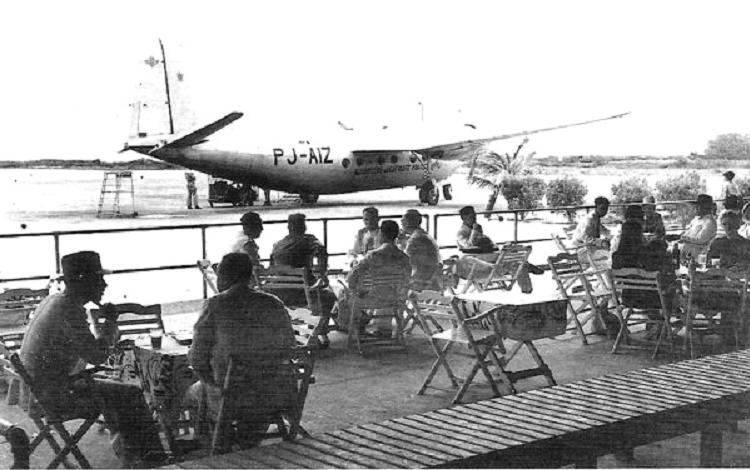
Curacao, Netherlands West Indies 1940
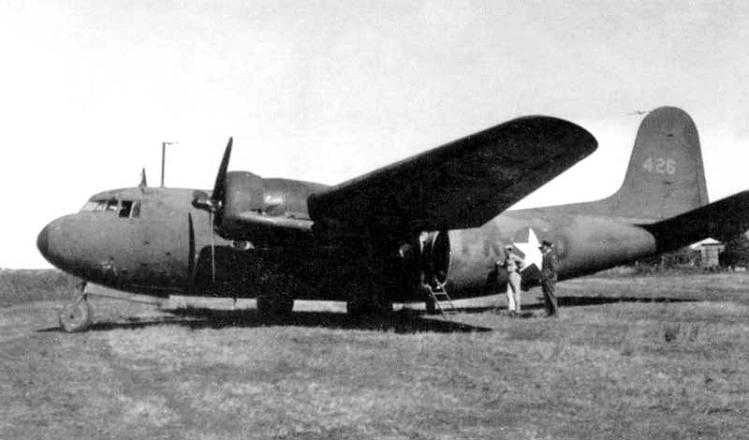
PK-ADD in Australia with USAAC star, and c/n 426 on the tail. Fred Niven collection
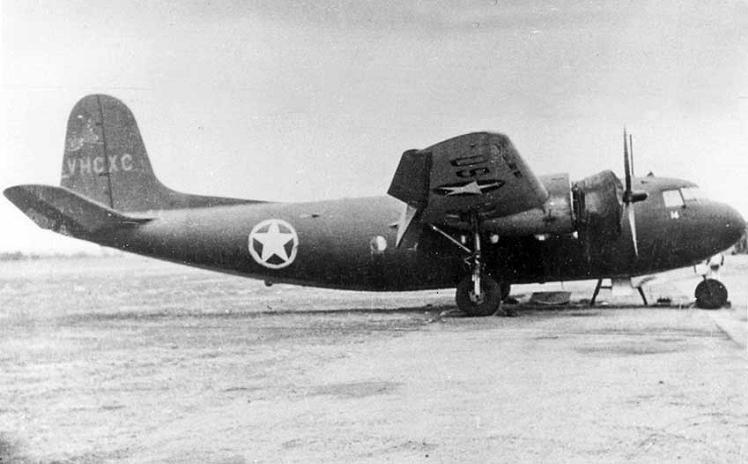
VHCXC with hand-painted US insignia, "US Army" under the wings, and a mysterious "14". Australian CofA certificate
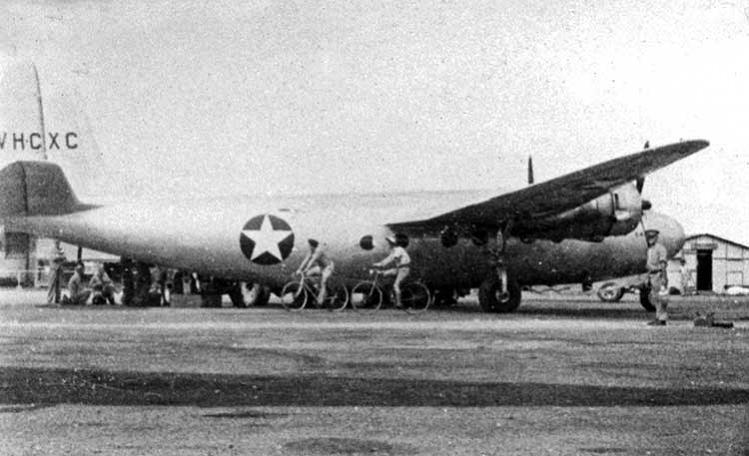
Townsville, while on the ADAT courier service. "ANA" on nose. David Vincent collection
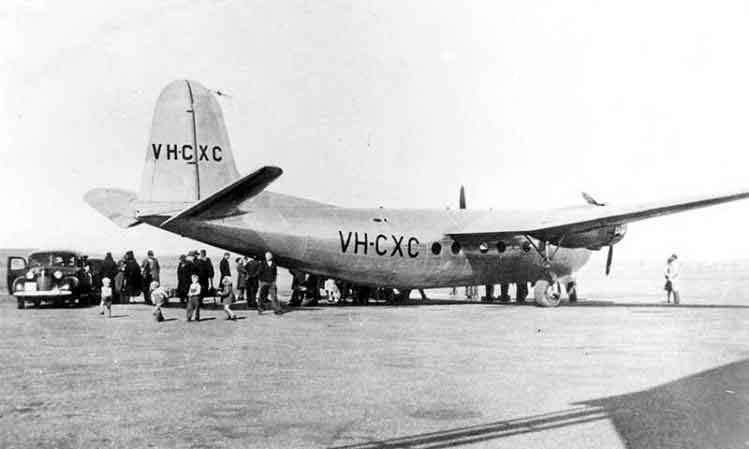
Launceston, Tasmania 1944 now as a civil airliner with ANA. John Hopton Collection
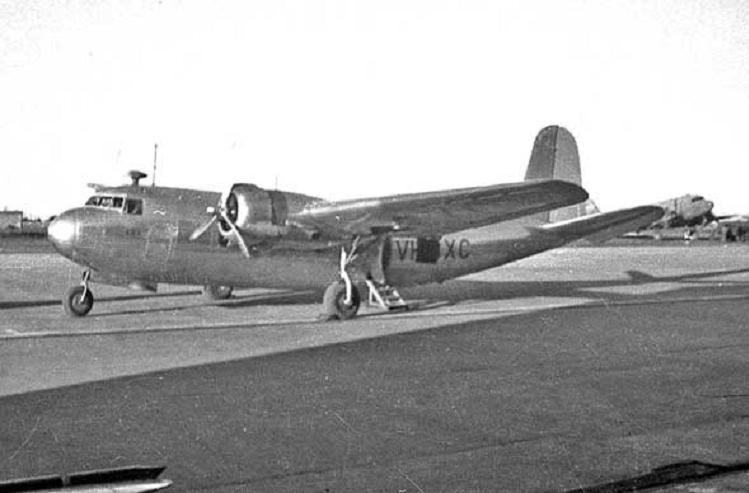
Essendon 1945 in civilian passenger service with ANA. Ben Dannecker collection
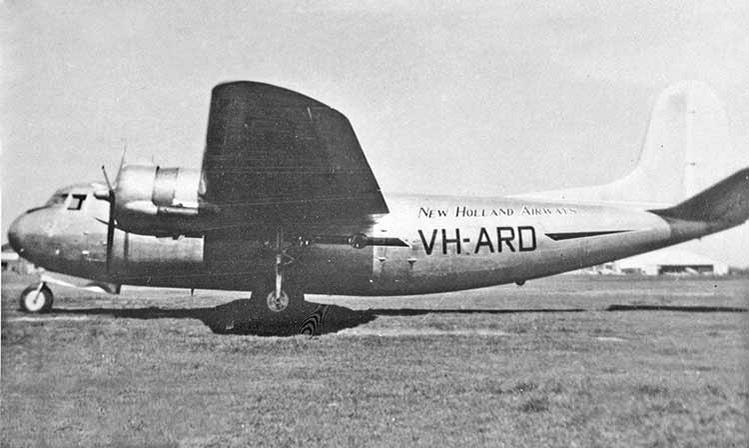
VH-ARD Essendon January 1948, New Holland Airways titles. Geoff Goodall collection

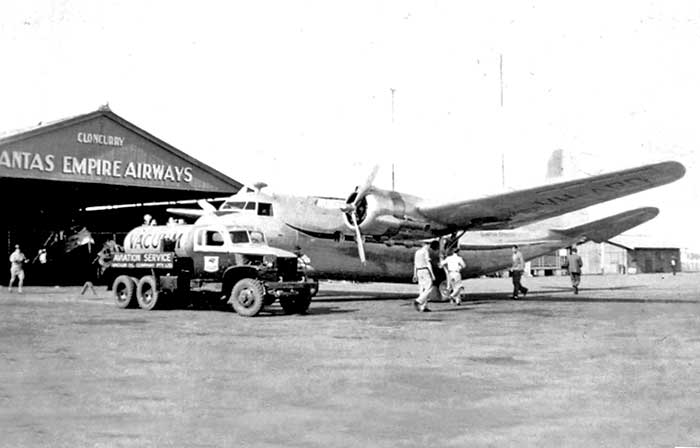
migrant charter. This photograph was taken by the Cloncurry resident flying doctor, Dr. Alan J. Wood
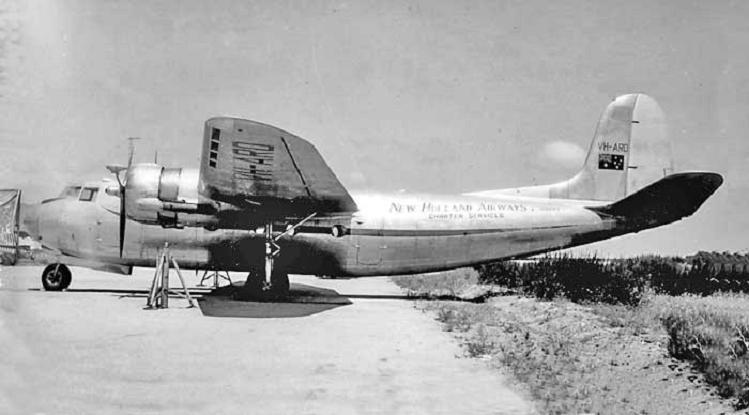
Haifa in June 1948, just after delivery to the Israel Air Force. Ed Coates Collection
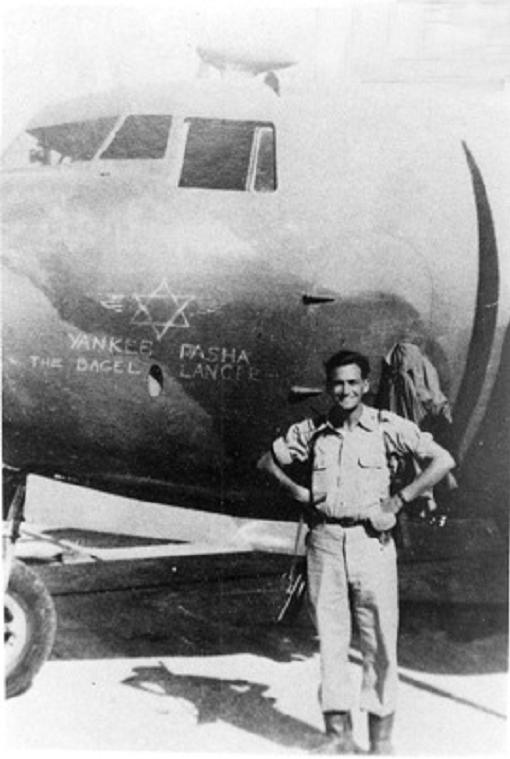
VH-ARD in Israeli service, camouflaged, "Yankee Pasha The Bagel Lancer"
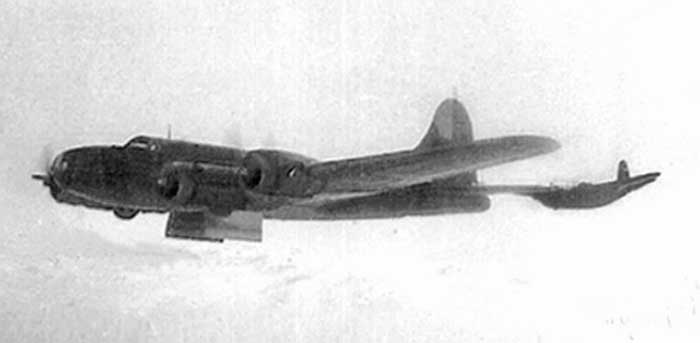
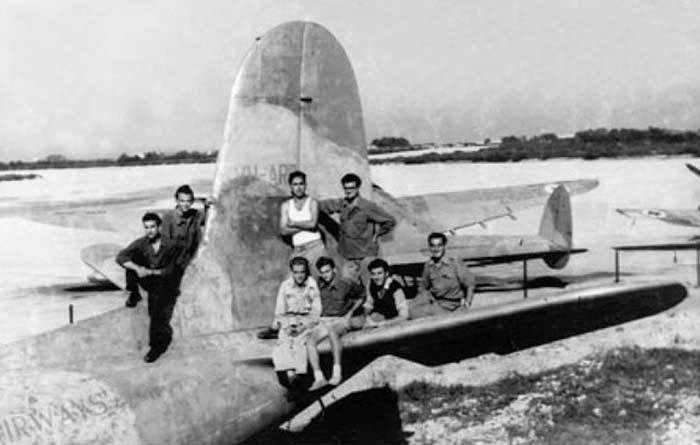
to reveal the previous Australian registration. The Lockheed behind is almost definitely also from Australia.
Photo: Dor Amos collection
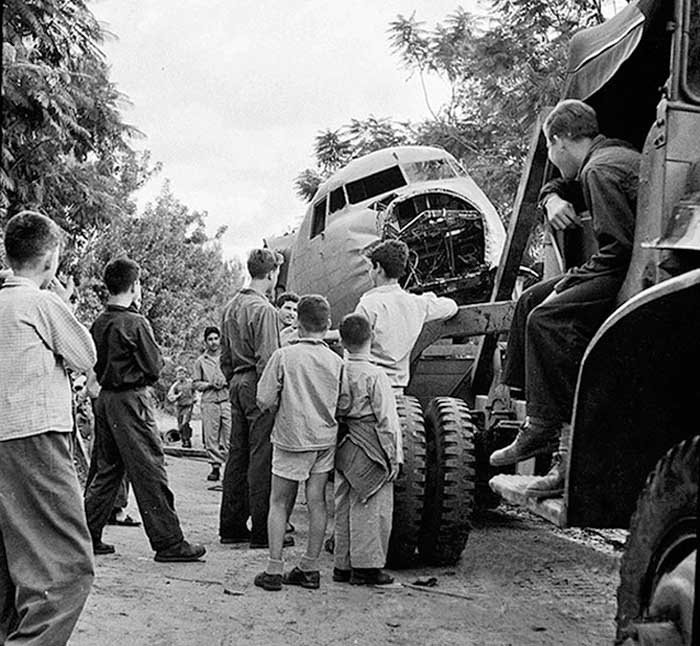
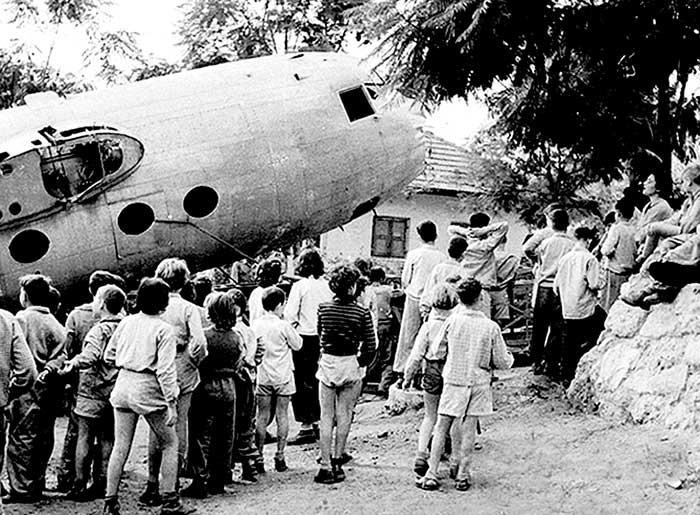
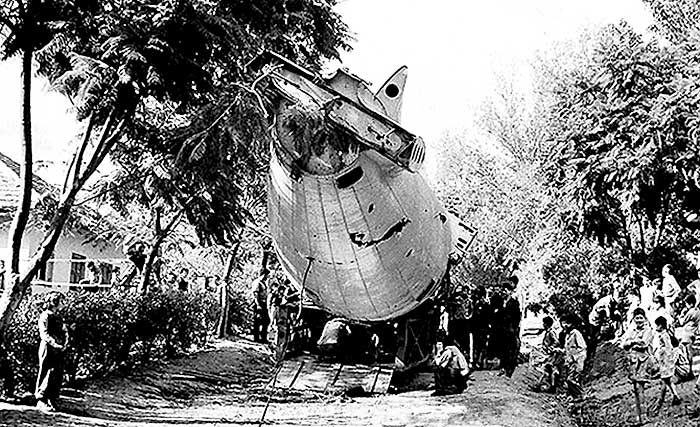
The fourth KNILM DC-5 was damaged at Batavia before it could escape to Australia:
C/n
430
Douglas
DC-5-511
PK-ADA
| .39 | Built by Douglas Aircraft Co at El Segundo, near
Los Angeles, California. Completed as model DC-5-511 Powered by two 1100hp Wright Cyclone GR.1820-G102A |
| 30.8.39 | Ordered by British Airways as part
of an order for nine DC-5s. Registration reserved G-AFYO. The proposed delivery schedule required this aircraft to be flown to Floyd Bennet Field, New York in March 1940 for transport by sea to Britain |
| .39 | After the declaration of war against Germany, the British Air Ministry instructed British Airways to cancel the order for DC-5 airliners. The down-payment funds lodged with Douglas to be transferred towards the purchase of other Douglas types for British military use |
| c/n 430 transferred during construction to KLM - Koninklijke Luchvaart Maatschappij | |
| Completed to KLM order as Model DC-5-511 with seating for 22 passengers |
|
| Registration reserved PH-AXG and name Grutto
(Godwit): changed to PH-AXE: neither registration used |
|
| Due German invasion of The Netherlands, KLM transferred this DC-5
to: KNILM - Koninklijke Nederlandsche-Indische Luchvaart
Maatschappij, Batavia, Netherlands East Indies
|
|
| 24.7.40 | C/n 428 & 430 loaded on board the ship MV Silverwood at San Pedro wharves, Los Angeles. Both aircraft were painted with KLM markings but had their registrations and names covered over |
| 24.7.40 | Ship departed San Pedro |
| 25.7.40 | Douglas quoted "Delivery Date" to KNILM |
| 27.7.40 | Certificate of Registration PK-ADA KNILM, Batavia |
| 7.40 | Shipped to Java |
| 9.40 | Assembled at Batavia aerodrome. Entered service on KNILM passenger services |
| 15.9.40 | KNILM press release announcing that two DC-5s had joined their fleet based at Batavia |
| 41 |
Due to increasing concern that Japan would enter World War II, NEI Government strengthened the military reserve. Civilian airline aircraft were included in the Netherlands East Indies Air Force reserve. PK-ADB was allocated NEAIF serial D-904 which was painted in small letters under the tailplane. |
| 12.41 | Due to the Japanese invasions of Java and Malaya, the KNILM fleet
was painted in olive drab camouflage with light undersurfaces. |
| 9.2.42 | Damaged on the ground by staffing Japanese fighters at Kemajoran
Aerodrome, Batavia. Damage reported as bullet holes in fuselage and wings, flat tyres and damage to cables of the electrical system of one engine. Temporary repairs carried out all night by KNILM engineering staff |
| 10.2.42 |
Flown from Batavia to Bandoeng Airport, Andir where the electric cabling bundle was replaced |
| 2.3.42 |
Almost ready for departure on evacuation flight to Australia by Captain K.J.T.M.F.F. Baron Rüpplin von Keffikon. Damaged again by Japanese air raid. Repairs carried out. Flight abandoned. |
| Joachim B. Rupplin, son of Captain Karl Rupplin, who was
scheduled to command the evacuation flight has written to advise
that his father related the story as follows: The day before departure Japanese raids had damaged the DC-5. KNILM mechanics worked through the night to repair it. At dawn the aircraft was ready to load civilian women and children and some priority Government officials. A Dutch official ordered that the aircraft be destroyed to stop it being used by the enemy and he became a POW for three years. |
|
| 8.3.42 |
PK-ADA captured by Japanese ground forces at Bandoeng |
| 9.3.42 |
Dutch
forces in Netherlands East Indies surrendered to Japan. The
Capitulation agreement specified no sabotage or damage to Dutch
military assets including aircraft. Plans to damage the DC-5 by making
it fall off jacks were discontinued because of fear of reprisals. |
| 9.3.42 | Dutch forces in the Netherlands East Indies surrender to Japan. |
| .42 | Flown from Bandoeng to Japan by Haruo Odagiri, test pilot for the Japanese Aeronautical Research Laboratory. He later wrote: “I had the privilege of flying the DC-5 to Japan. And I was given the assignment of flight testing and evaluating its performance and handling characteristics. It was a memorable experience.” |
| .42 | Evaluated at Tachikawa Army Air Base in flight evaluation tests
by Japanese Army Air Technical Intelligence Group. This group evaluated other captured
allied aircraft including Boeing B-17C, B-17E, Curtiss P-40E, CW21B, CW-22, Douglas A-20,
Martin 166. |
| DC-5 was painted all olive drab with red Japanese nationality insignia on the wings and fuselage. It had a white band around the fuselage and a white emblem on the tail for the "Testing Division of Army Aircraft Authority". | |
| The DC-5 was considered by the Japanese to be an important war prize. There was technical interest in the wing slots, the dihedral tailplane and its design similarity to the Douglas A-20 bomber series. | |
| 9.42 | A technical description of the DC-5 was published in the Japanese aeronautical press. Performance results were reported as disappointing with no superiority over the DC-3. |
| 12.43 | Report: DC-5 still in flying condition |
| Reported that after testing was completed, the DC-5 was used as a radio navigation trainer by the Japanese Army Air Force | |
| 2.44 | Report: DC-5 still in flying condition |
| 2.44 | DC-5 displayed with other captured Allied aircraft at a Victory Parade in Tokyo |
| 9.45 |
The DC-5 with engines removed and damaged nose was with abandoned aircraft on a Tokyo airfield |
| An interesting
footnote to PK-ADA's aborted evacation flight to Australia and KNILM
Captain Karl Rupplin appears in this account by Gerald W. Cassius
published in the Journal of American Aviation Historical Society Winter
1977 issue: "As part of an emergency plan to reinforce the Netherlands Indies, a batch of 32 Douglas DB-7B Bostons were diverted from British contracts and assigned to the Netherlands Naval Air Service (MLD) in NEI. The first six of these arrived in the port of Tjilatjap on Java’s south coast on February 27, 1942, barely 24 hours before the Japanese landed on Java. To save time, it was decided to fly the Bostons right off the harbor quay, which was cleared of all obstacles. Tjilatjap at that time had no airfield, but it was the only port which was still considered safe enough for arriving reinforcements, more in particular for the old USS Langley which was expected with a load of P-40s. Dutch maintenance crews had the first DB-7B ready for flight on March 5 and it was flown to the airfield at Tasik Malaja, east of Bandoeng. The remaining five airplanes were destroyed by punching holes through the wings with iron bars and by breaking the carburetors off the engines. When the Japanese arrived a few days later there was enough left to assemble at least one plane. The Japanese employed the Dutch Navy personnel, now POWs to continue work on the DB-7 and early May 1942 they had one plane ready. As was the case with the captured P-40s, the Japanese were reluctant to fly the Boston themselves and were probably not encouraged by the prospect of the very tricky short take-off from the quay. Therefore, they contacted Mr. Theodore de Bruyn, director of KNILM, the Royal Netherlands Indies Airlines with the request to provide a pilot who was familiar with American-built aircraft. Several KNILM European personnel who had not been able to evacuate, were in semi-hiding. In the days shortly after the Japanese take-over the Dutch civilians were not yet interned and enjoyed relative freedom if they did not make themselves too obvious. De Bruyn stayed in touch with them. The pilot whom De Bruyn decided to ask to fly the Boston was Karl Rupplin von Keffikon, despite his German name a full-blooded Dutchman. He had missed two opportunities to escape from Java, first with the Douglas DC-5 PK-ADA on March 7, 1942, and the second time with a KNILM Grumman G-21 on March 9, 1942, the day of the surrender. Both these aircraft were damaged in Japanese air raids at Bandoeng, hastily repaired for an escape, but at the last moment damaged again. Karl Rupplin was now hiding in the village of Tjileuleuh, north of Bandoeng. When Theo de Bruyn asked Rupplin if he could fly out the DB-7, he agreed, but told his boss that he would make an attempt to escape with the aircraft. De Bruyn approved the idea, despite the fact that the Japanese could obviously revenge themselves on him. Rupplin thereupon contacted two KNILM engineers. Cornelius Meier and M. Koster, who agreed to go with him. The three Dutchmen reported to the Japanese HQ in Bandoeng to announce their willingness to fly the Boston. Then they were taken to Tjilatjap by military truck. On arrival in the port area they found the Boston there apparently in good condition. However, there were no manuals or any information from which to determine take-off distance, speeds, range, etc. Since the airplane had been assembled by Dutch Navy mechanics, there was of coarse the possibility that it had been sabotaged. Therefore, the Navy people were contacted, but they declared that the plane was in perfect condition and fit to fly. When the trio inspected the Boston, it was obvious that it did not possess sufficient range to reach Australia. Moreover, they had no idea about the military situation around Australia, and all maps were lacking for such a trip. It was therefore decided to make a try for Christmas Island, which lay some 300 miles southwest in the Indian Ocean and probably had not yet been occupied. On the day of departure the tanks of the Boston were topped off and Dutch Navy POW’s began clearing the quay from all obstructions. Karl Rupplin reported how he will never forget the hatred in the eyes of these men, who naturally thought that they were collaborating with the Japanese. The engines were fired up and tested, but just when everything seemed alright, a Japanese Army captain appeared who informed them that an armed Japanese guard would go along on the flight, which officially was destined for Bandung. The Japanese guard added a completely new element to their plan. The engines were shut down again and they quickly discussed what to do next. Meier brought the decisive factor into the discussion in the form of an enormous crescent wrench he carried around for a while. He had earlier voluntarily declined an opportunity to be evacuated to Australia while there was still time, but was now determined to not let this last chance pass him by. Meier assured his mates that he could put the Japanese to sleep once they were airborne. It was agreed that they would fly the plane around for 30 minutes in order to estimate the fuel endurance. If there was enough to go to Christmas Island. Karl Rupplin would take his flying helmet off his head, which was the sign for Meier to give the Japanese guard the crescent wrench treatment. The take-off from the harbor quay was a nerve-wracking experience. The airplane was heavy and there was only some 10-12 feet clearance between the left wingtip and the port warehouses, while Rupplin of course had never flown a DB-7 before. Unfortunately, Rupplin had to decide after half an hour flight that their range was insufficient to make Christmas Island. He kept his helmet on and three very disappointed Dutchmen and one unsuspecting Japanese guard landed at Andir Field, Bandoeng. If the Boston flown by Rupplin was the one flown to Japan for testing, its identity was ex-RAF AL904, Douglas c/n 3836." |
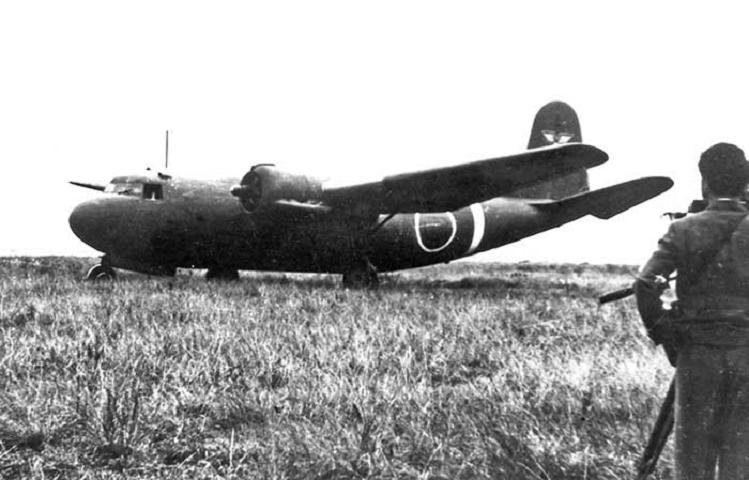
PK-ADA being evaluated in Japan. Photo: Douglas via Harry S. Gann
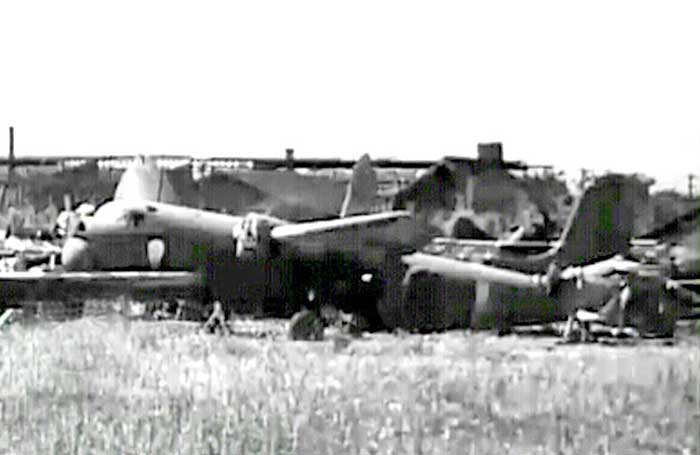
A clip from a US military film, scanning across discarded aircraft at a Tokyo airfield in September 1945, as occupying
troops moved in. The captured DC-5 PK-ADA is engineless and the nose cone is dislodged. Thanks to Paul van Horst
Tailpiece
The attractive lines of the DC-5 design are clearly seen in the photograph below of the prototype NC21701 before the horizontal tailplane was modified with dihedral to avoid airflow buffeting. It was first flown at Mines Field (now the site of Los Angeles International Airport) on 20 February 1939. This DC-5 was purchased as an executive aircraft by William E. Boeing, founder of the Boeing Airplane Co. He traded his Douglas Dolphin NC14205 Rover to Douglas on the DC-5, which he also named Rover. In February 1942 William Boeing donated his DC-5 to the Government for the war effort and it was taken over by the US Navy as a R3D-3 transport. His personal pilot Captain Clayton L. Scott recalled of the DC-5 "It was a nice flying ship, about 15 mph faster than the DC-3. But it did not have the fuel capacity of the DC-3 and it had Wright Cyclone engines which the airlines did not care for at that time."
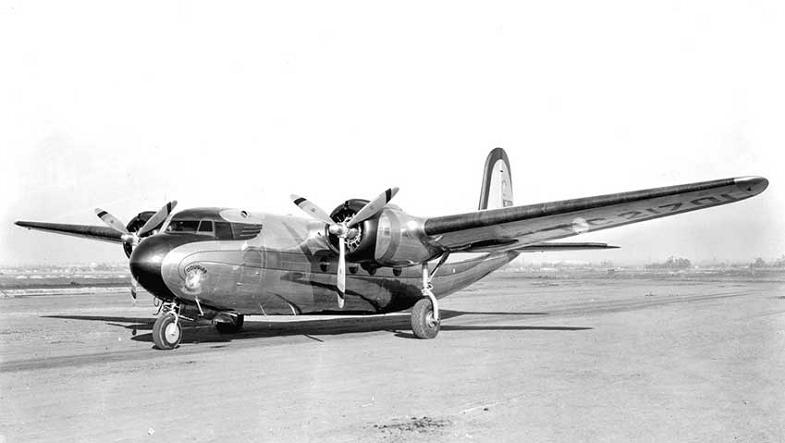
NC21701 at Mines Field, with Douglas insignia on the nose. Douglas via Harry S. Gann
References:
- Australian Civil Aircraft Register ledgers, Department of Civil Aviation and its successors
- DCA aircraft file VH-ARD: National Archives of Australia, Melbourne
- National Library of Australia - Trove newspaper archive website
- Sydney Airport Customs records 1942-50, National Archives of Australia, Sydney: extracted by C.H.O'Neil
- Aircraft in Australia Series, DC-5, John Hopton, draft 30 January 2000
- The Migrant Caper 1947-1949 by Geoff Goodall: details on New Holland Airways
- National Library of Australia, newspaper search site: http://trove.nla.gov.au/ndp/del/home
- Flypast - A Record of Aviation in Australia, Neville Parnell & Trevor Boughton, CAA 1988
- 36 Squadron News Bulletin issue 13 July 1993: recollections of RAAF pilot Arch Widt.
- McDonnell Douglas Aircraft since 1920, Rene J. Francillon, Putnam, London 1979
- United States Navy Aircraft since 1911, Gordon Swanborough & Peter M. Bowers, Putnam, London 1976
- Airlines of Latin America since 1919, R.E.G.Davies, Putnam London 1984
- On The Edge: A History of the Israeli Air Force and its Aircraft since 1947. Bill Norton, Midland Counties Publications, 2004.
- Front Line Airline, The War Story of Qantas, E. Bennett-Bremner, Angus & Robertson Ltd, Sydney 1944
- Roll Back the Skies, Vern Polley, self published, 2000 - ISBN 0 9578162 2 7
- Pilots and Propellers A lifetime in aviation, Doug Fawcett, Crawford House Publishing, Bathurst 1997
- Airlines and Aircraft of the Ansett Group 1921-2002, CD by Fred Niven: fniven@bigpond.net.au
- Man and Aerial Machines, editor Trevor W, Boughton, No.42 March-April 1994: ADAT daily list
- Forgotten Five: The history of the very limited production of the Douglas DC-5 Airliner by Mike Delta,
- Air Classics magazine, Volume 29, Number 7, July 1993.
- Bagel Lancer, Shlomo Kleszcelski, Flypast magazine, September 1990
- The Israeli Air Force Story, Murray Rubinstein & Richard Goldman, Arms and Armour Press 1979
- Defunct Register - Netherlands East Indies, H.J.Hazewinkel, Air Britain Digest Nov-Dec 1978
- Central America and the Caribbean Civil Aircraft Registers, Ian P. Burnett, Air-Britain, 1978
- Air Pictorial magazine, monthly: DC-5 references: January, February, April, May, June 1955; March 1956;
August 1966; April, September 1967; August 1976;
- KLM DC-5s: http://www.hdekker.info/DIVERSEN/dc5.htm
- Correspondence with KLM reearcher Ronald Dijkstra